A multi-stem tree is one that has two or more trunks emerging from, or close to, the base. Known for their sculptural beauty, these trees bring instant character to any garden and add depth, texture and visual drama. Whether you’re seeking striking bark, graceful blossom or year-round interest, multi-stem specimens offer a distinctive blend of elegance and architectural presence. They work perfectly as statement features or as part of layered planting schemes.
At King & Co we stock Amelanchier lamarkii, Himalayan birch and Tibetan cherry in multi-stem form, check them out!
Owing to the habit of these trees, they are only available for local/dedicated deliveries or collection. The tree nursery is open Monday-Friday from 9am – 4pm if you want to visit!
Amelanchier lamarckii. A highly versatile tree with interest in every season. In early spring it produces masses of white, star-shaped flowers. By summer it forms edible berries that attract birds and other wildlife. In autumn, the foliage shifts to bright shades of orange, red, and gold, giving it strong ornamental value. As a multi-stem tree, it adds structure and visual depth to planting schemes.
Himalayan birch. Valued for its bright, papery white bark that brings clarity and light to the garden year-round. In spring it produces fresh green leaves that create a soft, upright canopy through summer. In autumn, the foliage turns warm yellow, adding seasonal colour before the stems take centre stage again in winter. As a multi-stem tree, its peeling white trunks create a strong architectural presence and pair well with grasses, evergreens and naturalistic planting schemes.
Tibetan cherry. Known for its smooth, glossy copper-red bark, which stands out especially in winter. In spring it produces small white flowers, followed by clean, attractive summer foliage. As a multi-stem tree, its striking bark is shown off across several trunks, giving it a strong architectural impact.
A Guide to Screening Trees: Is Photinia Good for Natural Privacy?
Bare Root Planting Tips: How to establish a native hedge on a tight budget
A Guide to Pleached Trees: How effective are Hornbeam at creating privacy?
A Guide to Leylandii: Is it good for screening?
The dormant months have officially started, and that means the bare root season is here! Order your plants now to enjoy…
🌿 Lower purchase and delivery costs
🌱 Easy handling and planting
🌸 Perfect options for large-scale planting projects
🌳 Excellent establishment rates with the right care
5. Hazel (Corylus avellana). Produces catkins in early spring and edible nuts later in the year. Hazel is great for biodiversity, coppicing and woodland edges.
4. Blackthorn (Prunus spinosa). Famous for its sharp thorns and white spring blossom, Blackthorn forms a dense, impenetrable hedge and produces sloes in autumn.
3. Dog Rose (Rosa canina). A classic British hedgerow favourite with pink-white flowers, arching stems, and red hips in autumn. Dog rose is ideal for wildlife and natural barriers.
2. Common Dogwood (Cornus sanguinea). Fast-growing with vivid red stems in winter and crimson autumn foliage. Common dogwood is a popular choice for year-round interest and colour.
1. Hawthorn (Crataegus monogyna). The star of British hedgerows! Dense, thorny, and wildlife-rich, with white spring flowers and red autumn berries. It is a top choice for native planting.
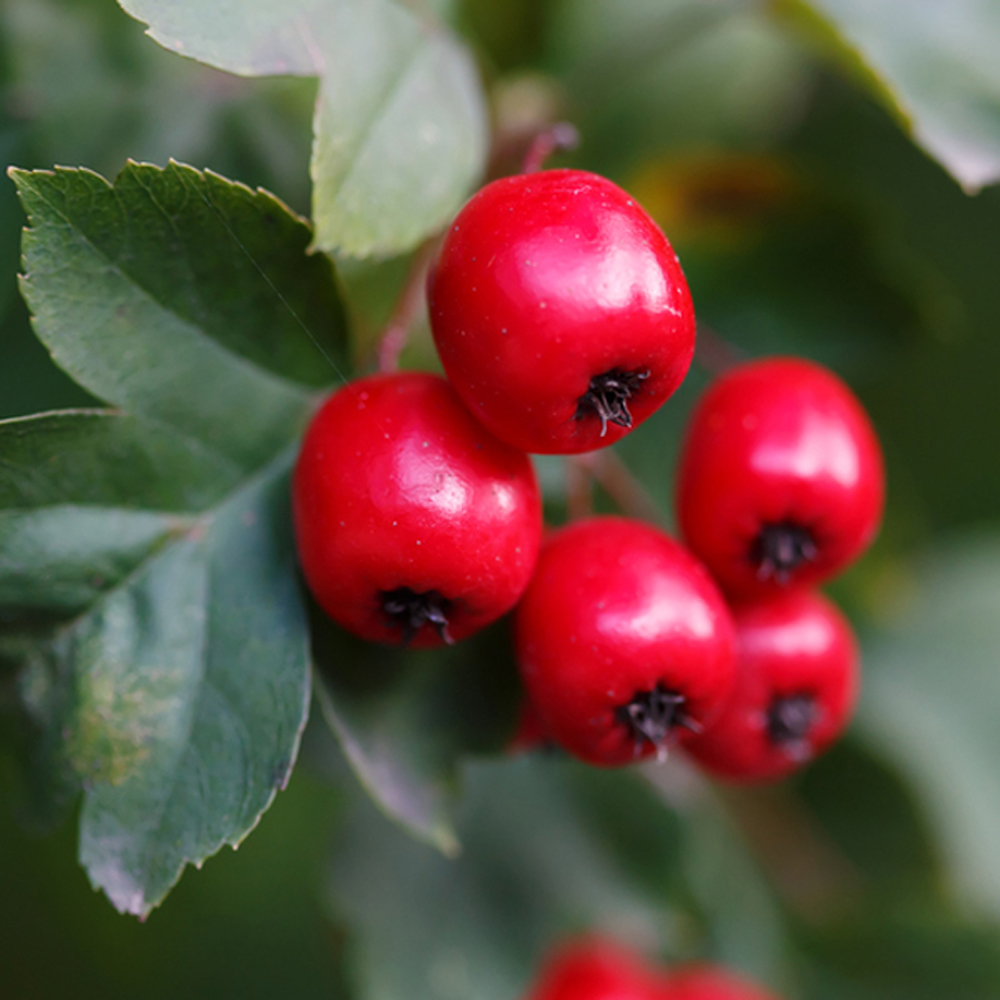
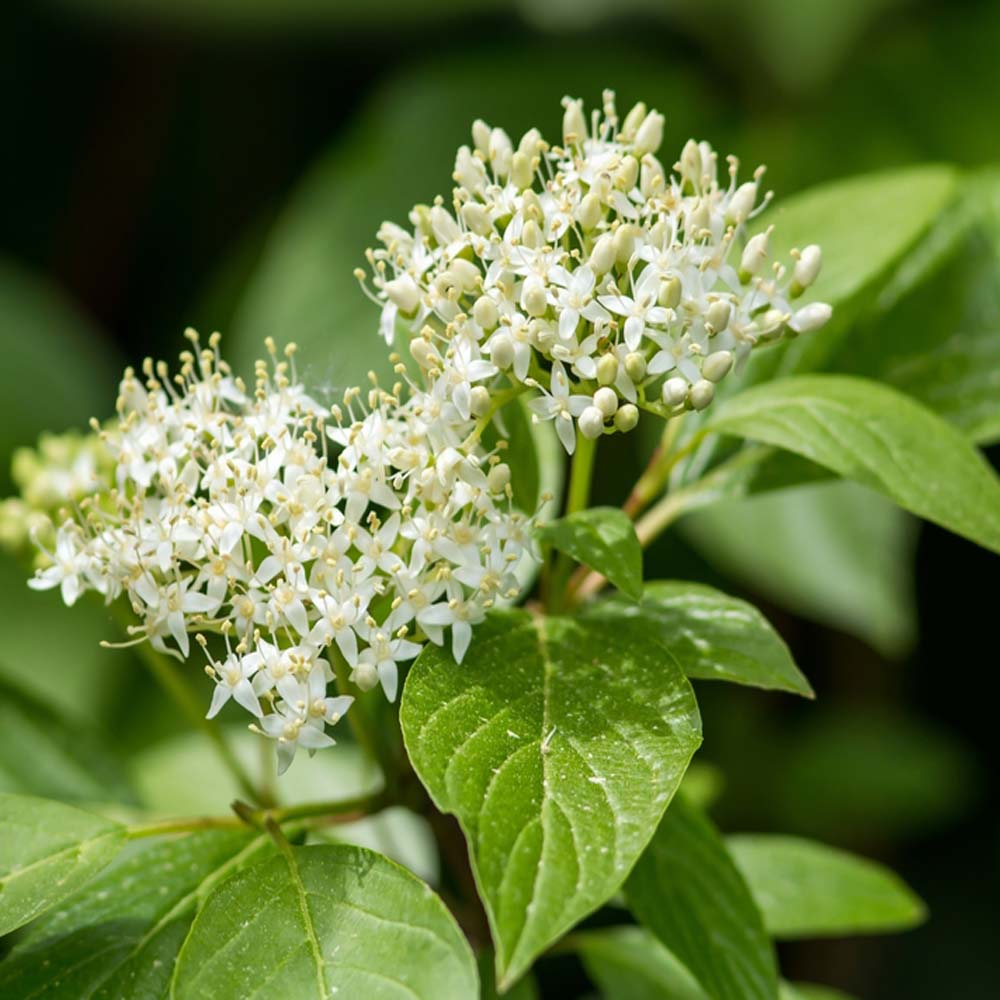
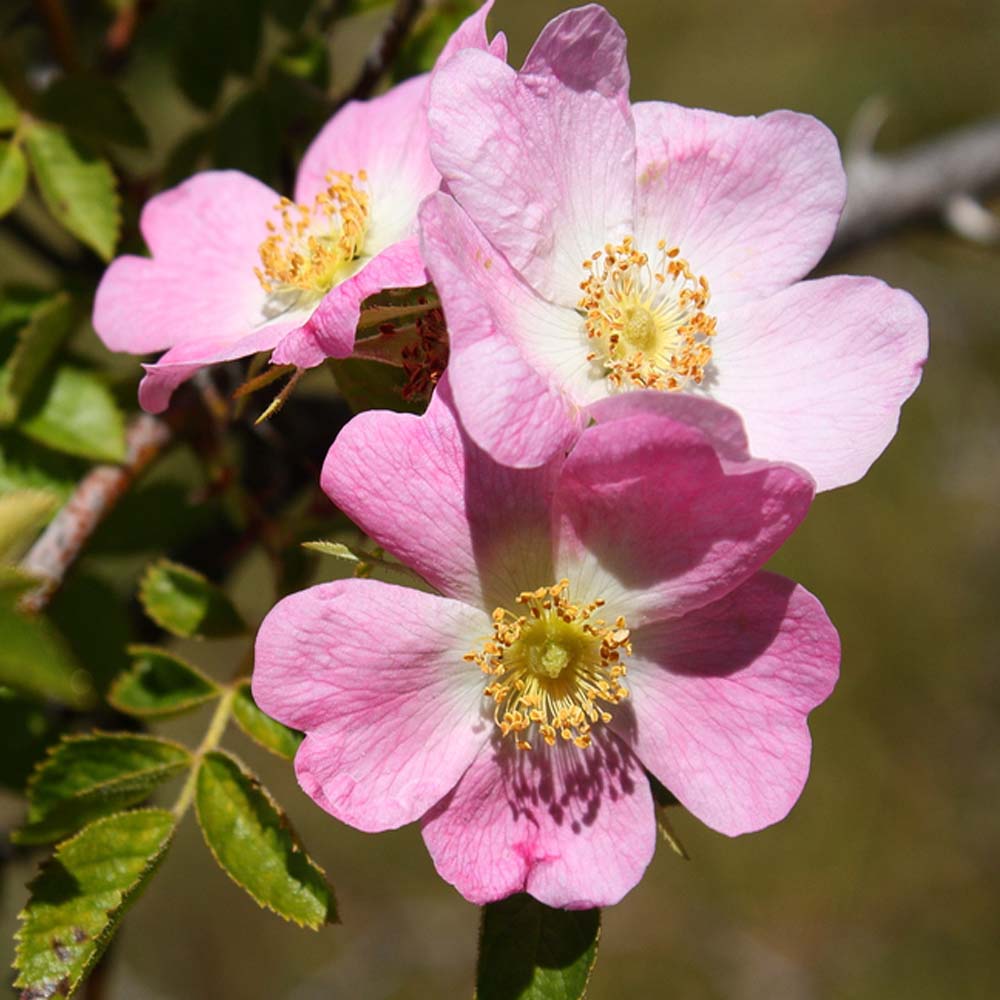
When planting 40-60cm or 60-90cm tall bare root plants in a double staggered row, we usually recommend that you plant five plants per metre in a double staggered row. This spacing creates a thick, attractive and wildlife-friendly hedge in no time.
If you are planting the hedge under a grant scheme, like BN11, then you will need to plant at least size plants per metre in order to meet the planting requirements.
A few simple accessories can make all the difference in helping your young plants establish quickly and stay protected. Guards and canes are especially useful for shielding plants from rabbits and deer while supporting upright growth, and they can significantly improve survival and growth rates (especially during the first year).

When planting bare root whips, we recommend the notch planting method. This is a quick and effective way to plant without heavy digging.
Avoid exposing roots to wind or sun before planting, even a short period of drying out can cause damage.
A Guide to Screening Trees: Is Photinia Good for Natural Privacy?
Bare Root Planting Tips: How to establish a native hedge on a tight budget
A Guide to Pleached Trees: How effective are Hornbeam at creating privacy?
A Guide to Leylandii: Is it good for screening?
As the seasons shift, we sometimes hear from customers concerned about yellow leaves appearing on their evergreen plants (like Laurel). The good news is that yellowing leaves aren’t always a sign of trouble. In many cases, they’re simply part of a plant’s normal growth cycle.
If you notice yellow leaves appearing halfway down Laurel branches, or closer to the main stem, there’s usually no need to worry. This pattern indicates that only older leaves are being shed naturally.
However, if the yellowing is concentrated at the branch tips, the area where new growth should appear, it could signal stress, nutrient deficiency or another issue that needs attention.
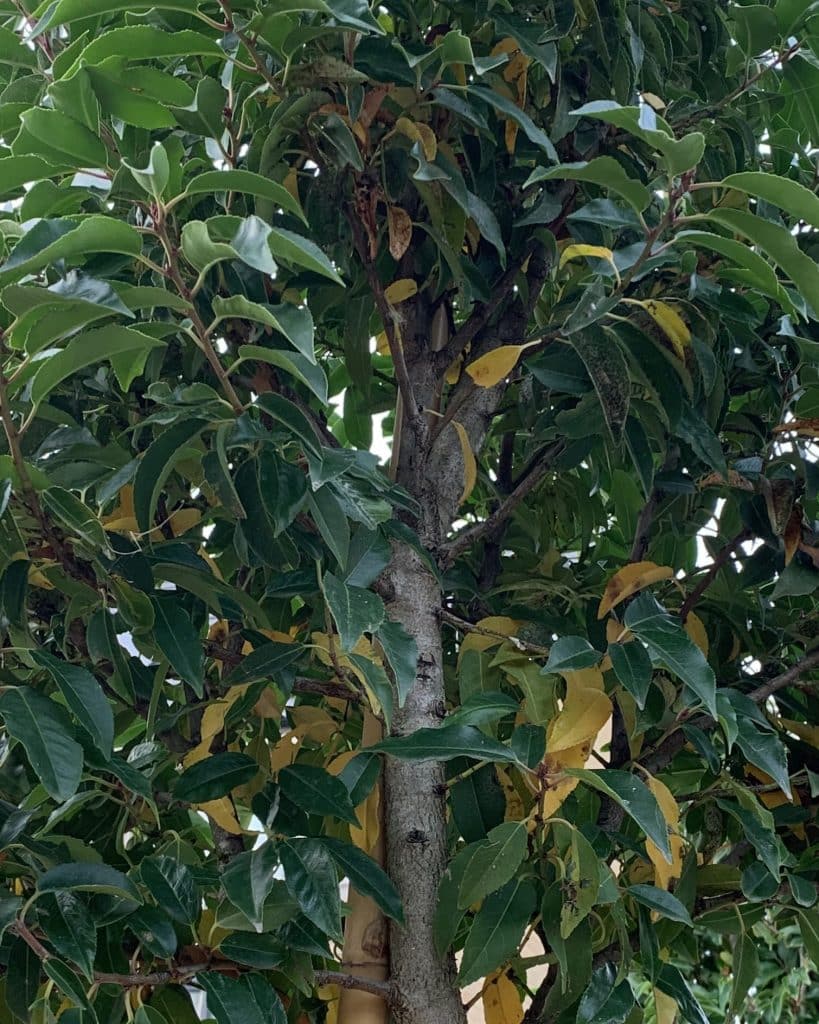
During autumn, laurel plants may shed some of their older leaves. This natural process helps the plant conserve energy and prepare for the colder months ahead. The yellowing and eventual drop of mature leaves is a normal part of renewal, somewhat similar to how deciduous trees lose their foliage in autumn.
Keep in mind that some deciduous trees also show yellowing leaves at this time, but in their case, the colour change is part of the normal autumn transition before leaf drop. Yellow autumn foliage is especially common in trees like birches.
Even in spring, a few yellow leaves can appear as the plant redirects energy toward new growth and flower production. When new shoots are forming, the plant may sacrifice some of its older foliage to support that burst of fresh energy.
A Guide to Screening Trees: Is Photinia Good for Natural Privacy?
Bare Root Planting Tips: How to establish a native hedge on a tight budget
A Guide to Pleached Trees: How effective are Hornbeam at creating privacy?
A Guide to Leylandii: Is it good for screening?
Native trees are species that have naturally established in the UK. They’ve adapted to the climate and environment over thousands of years. Choosing them is a great way to celebrate the beauty, character and biodiversity of Britain’s flora. Plus, they often match the local landscape. This helps them blend easily into their surroundings. Want to plant native? Check out our top 10 native trees!
Common alder thrives where other trees struggle. It handles poorly drained soils and wetter areas, making it perfect for riversides, wetlands and coastal spots. Its roots also help stabilise banks, while its catkins and leaves support a wide range of wildlife.
Hazel is a firm favourite for both people and wildlife. Its nuts provide food for birds and small mammals, while its dense branches offer great shelter. It’s also easy to coppice, making it ideal for traditional woodland management. Whether in hedges, gardens, parks or woodlands, hazel adds structure, life and seasonal interest to any space.
Field maple is the UK’s only native maple, and it’s as versatile as it is attractive. It works well in medium to large gardens, parks and woodlands, offering golden autumn colour and dense, wildlife-friendly foliage. You’ll also spot it in hedgerows across the countryside!
Beech offers year-round interest. Its leaves often stay on the tree through winter, giving great seasonal cover. Green beech has glossy, bright green leaves that turn orange and brown in autumn. Purple beech leaves shift from greenish-purple in spring to deep copper and red by late autumn!
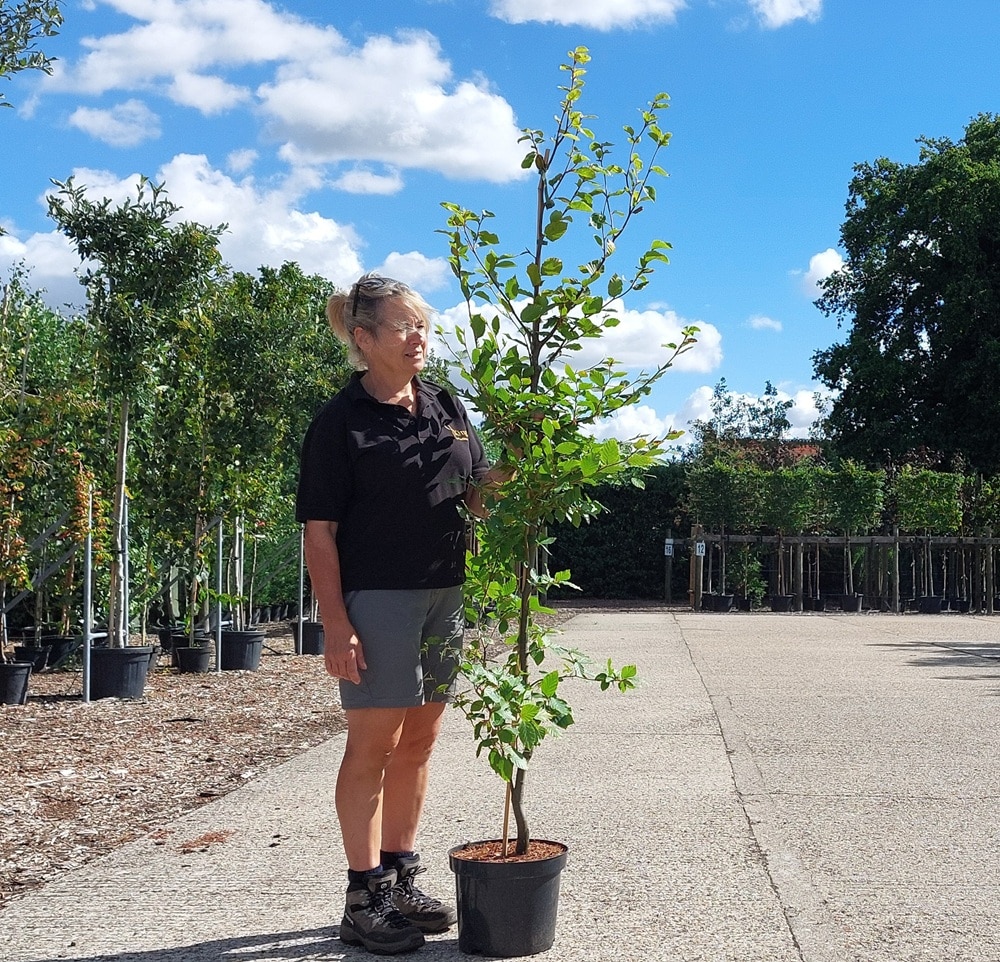
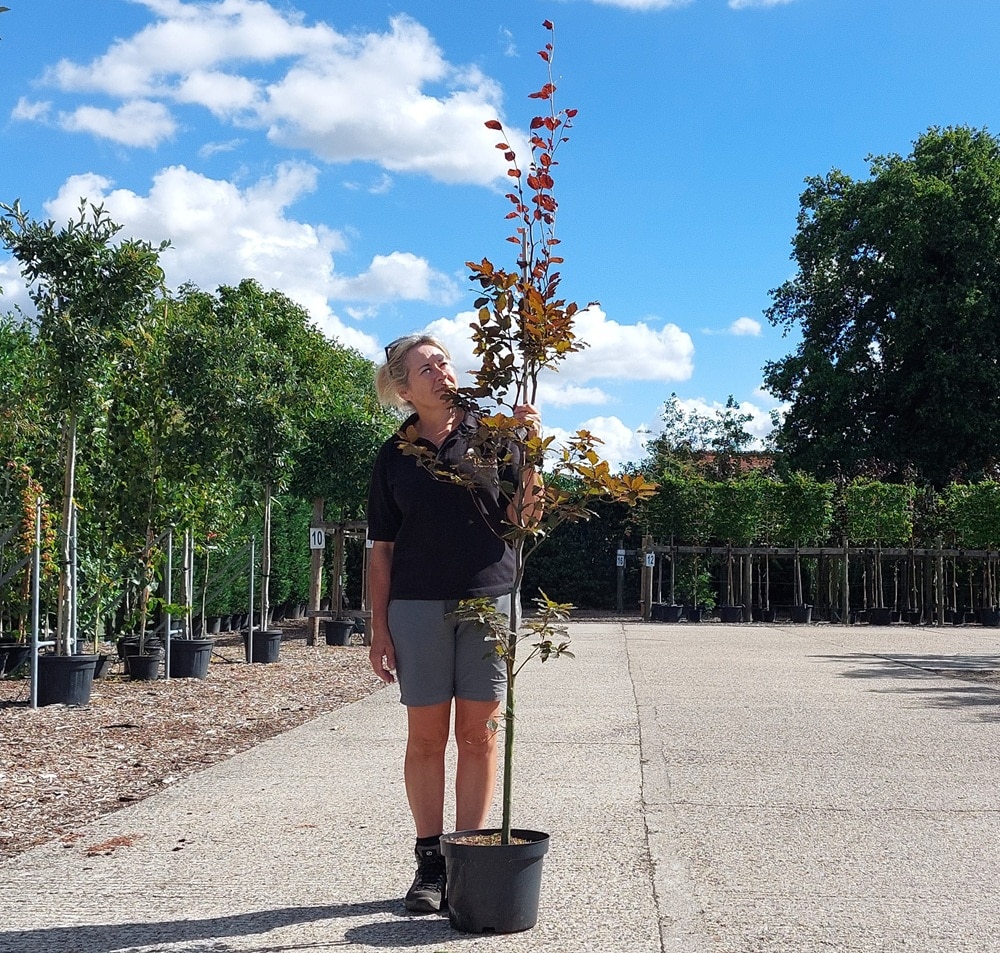
Like beech, Hornbeam keeps its leaves through much of the winter, offering reliable cover in colder months. It’s a popular choice for hedging and screening, and works well in both woodlands and open spaces. Even better, hornbeam thrives in clay soil, making it a tough and versatile option for tricky sites.
Three of our favourite native fruiting apples are the Bramley, Cox’s Orange Pippin and Discovery. Each offers delicious fruit and classic British character. Our fruit trees are grown on a semi-dwarfing rootstock (MM106), which produces strong, healthy trees that reach a manageable height of around five metres (perfect for gardens and orchards).
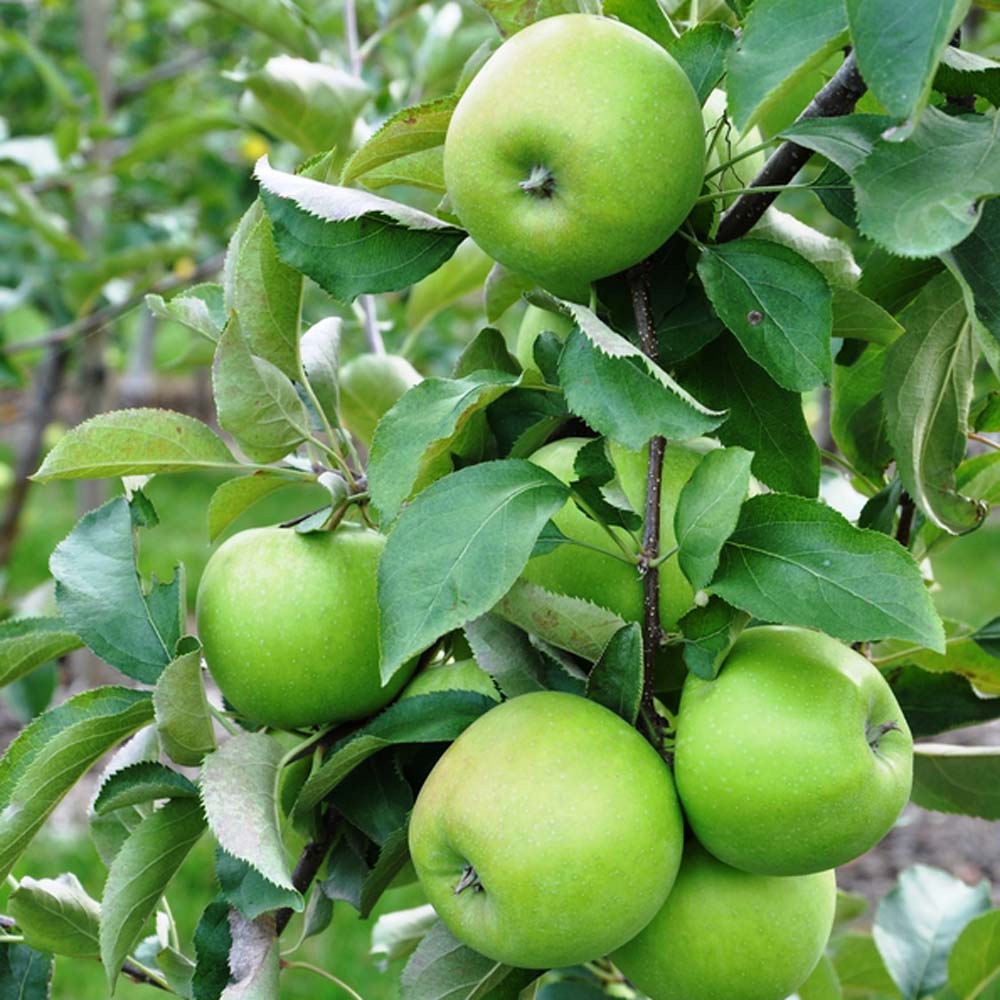
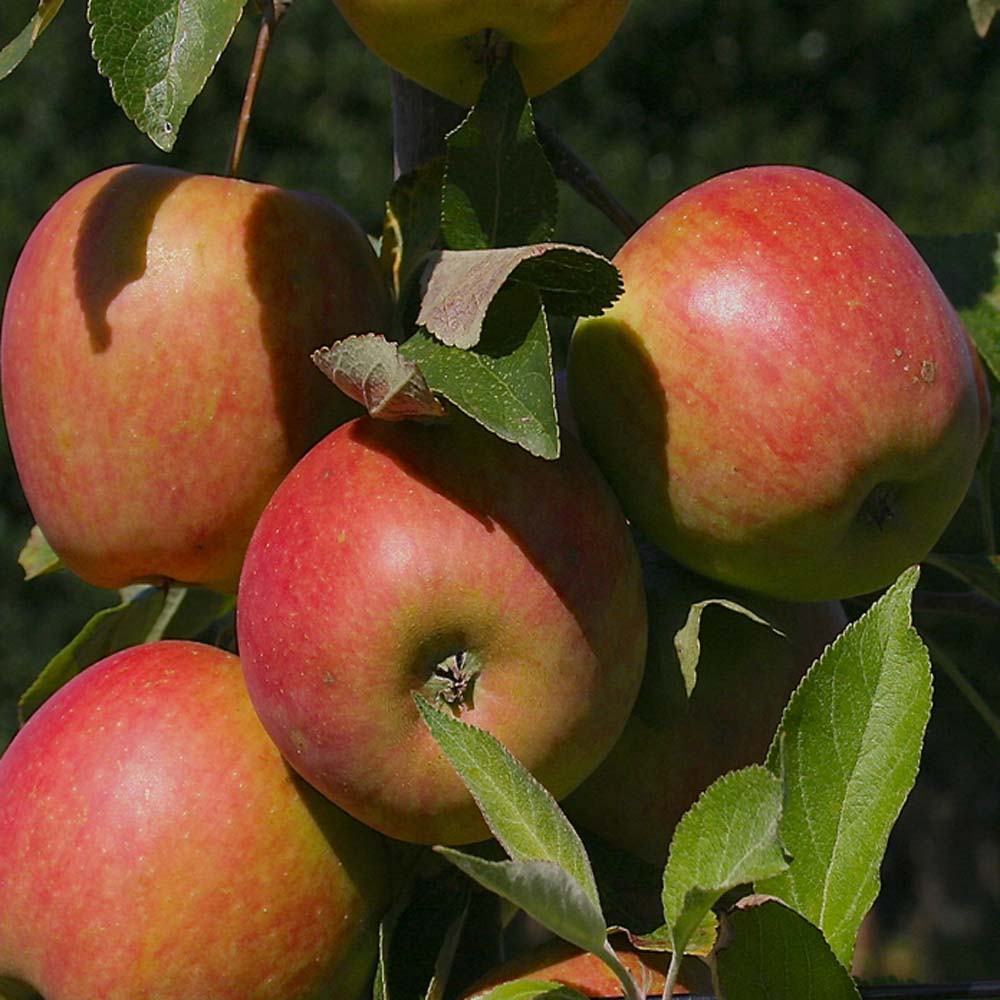

Rowan brings beauty through the seasons. In spring, it’s covered in clusters of white flowers, followed by bright red berries in autumn that attract birds. This hardy native is a versatile choice for adding colour, interest and wildlife value all year round.
Wild cherry stands out with its red-banded bark, white spring blossom, and heart-shaped fruit. It’s loved for its stunning seasonal display and is a favourite of both people and wildlife. Plant it for beauty, biodiversity, and a touch of spring interest.
Silver birch is a graceful tree with striking bark and delicate leaves. This fast growing, elegant tree is very popular in gardens and rewilding projects. Its airy canopy lets light through, supporting a rich variety of wildlife beneath.
English oak is a true British icon. Its sturdy branches and deep green leaves create a majestic presence. This long-lived tree supports hundreds of wildlife species, making it vital for nature. It’s perfect for parks, woodlands and large gardens.
Owing to Oak Processionary Moth (OPM) we are currently unable to stock any Oak over 8-10cm girth!
A Guide to Screening Trees: Is Photinia Good for Natural Privacy?
Bare Root Planting Tips: How to establish a native hedge on a tight budget
A Guide to Pleached Trees: How effective are Hornbeam at creating privacy?
A Guide to Leylandii: Is it good for screening?
Autumn is a great time to plant trees as the soil is still warm from summer, but moisture levels are rising. This helps young roots settle in before winter arrives. Whether you’re adding colour, structure or wildlife value to your garden, planting in autumn sets the stage for a spectacular display. Here are our top 5 ornamental trees to plant for a stunning, blossom-filled spring!
If you want your garden to burst into life in spring, ornamental cherries are hard to beat. With their show-stopping blossoms and graceful forms, they bring instant beauty and timeless charm. Three of our favourites include:
‘Kanzan’. One of the most popular flowering cherries, ‘Kanzan’ puts on a truly spectacular show. In mid to late spring, its branches are smothered in rich, double pink blossom. It also makes a real statement in medium to large gardens, with its strong, upright shape that matures into a spreading crown!
‘Amanogawa’. Ideal for smaller gardens, this Cherry has a narrow, upright habit that fits perfectly in tight spaces. Its semi-double, pale pink flowers appear in vertical sprays up the columnar branches in late spring and its autumn foliage brings warm orange and red tones.
‘Autumnalis Rosea’. This unique cherry that flowers not once, but twice! You’ll see delicate, pale pink blossoms appear sporadically from November through winter, followed by a fuller flush in early spring. Compact and charming, it brings a soft touch of colour when little else is blooming.
Perfect for: Small to large gardens and seasonal interest
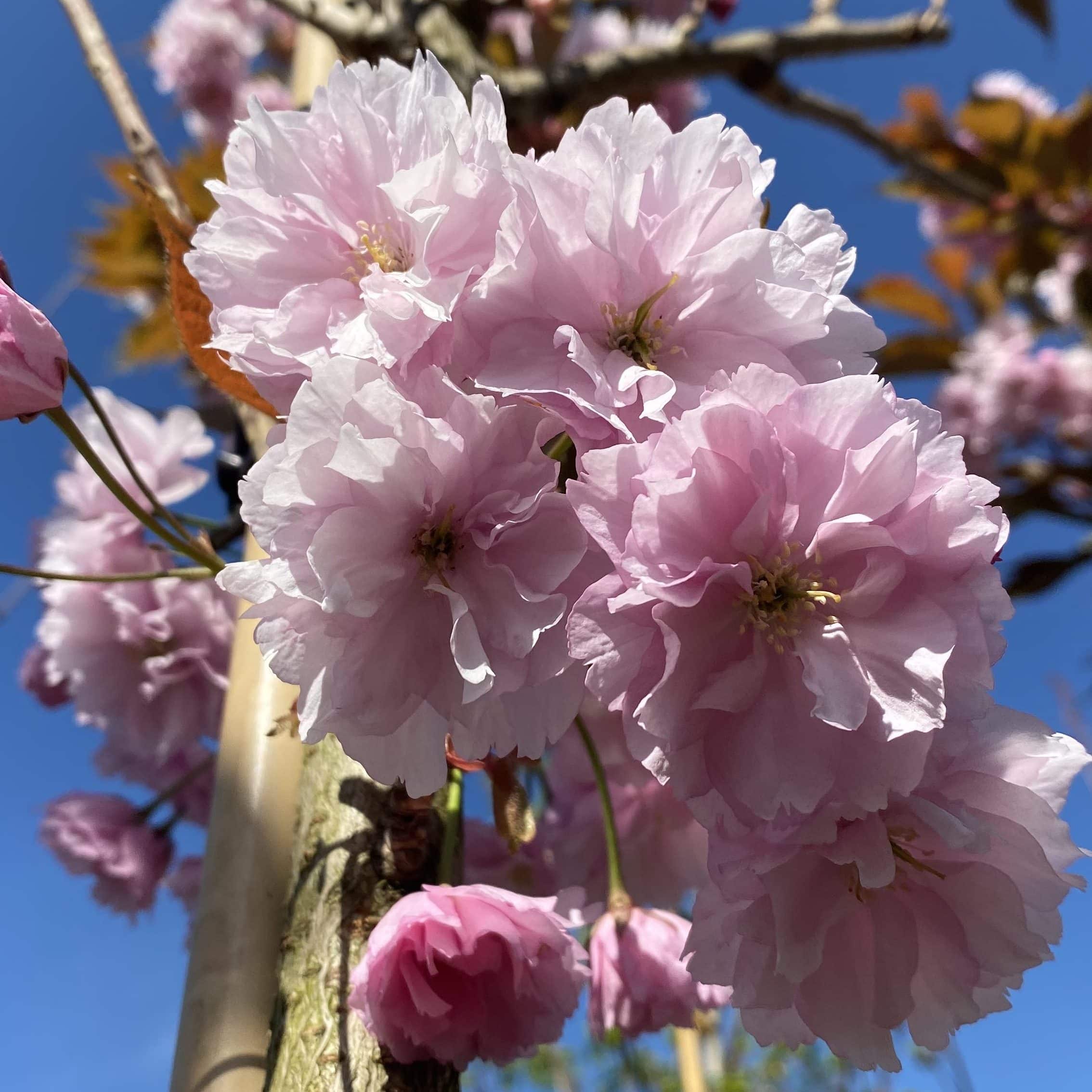
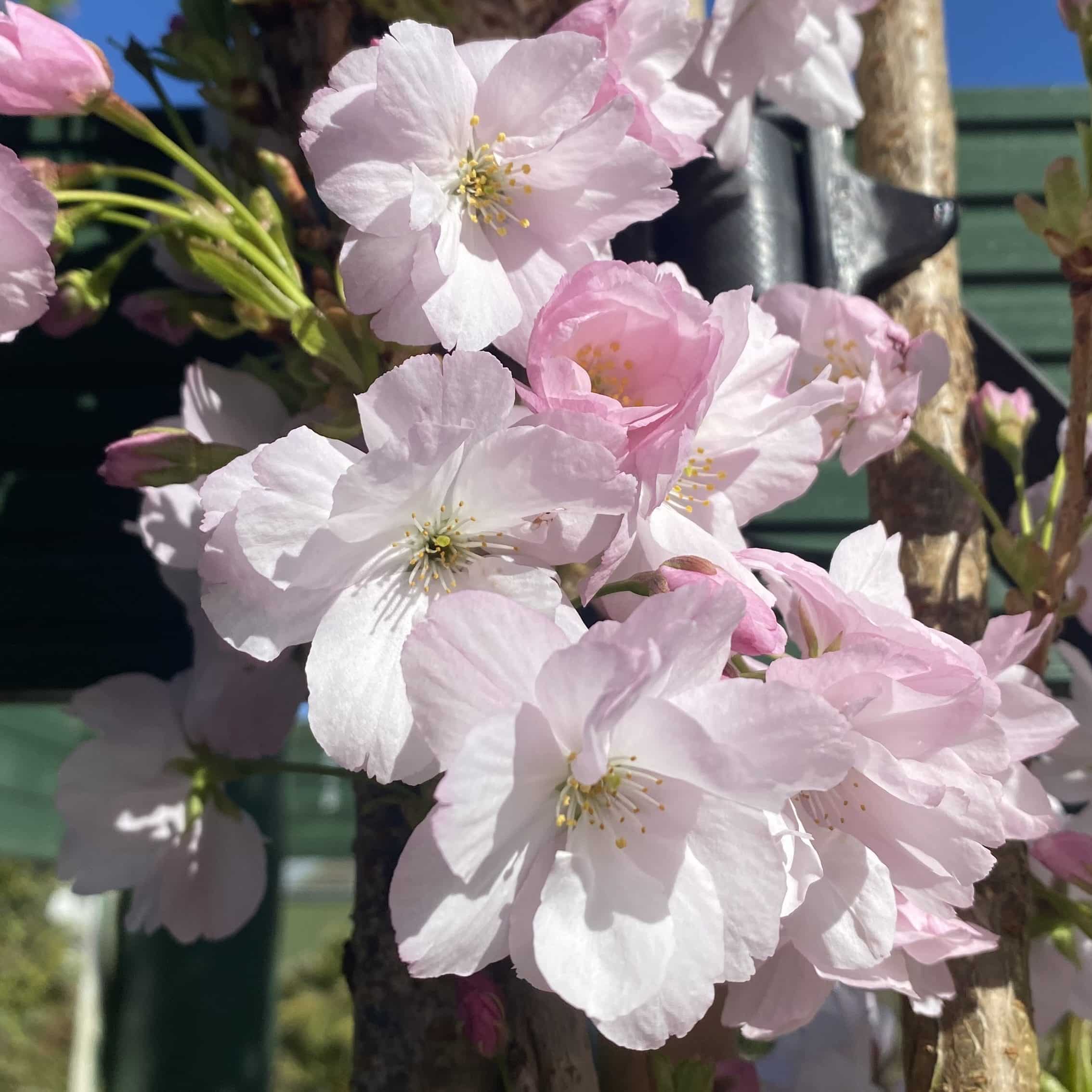
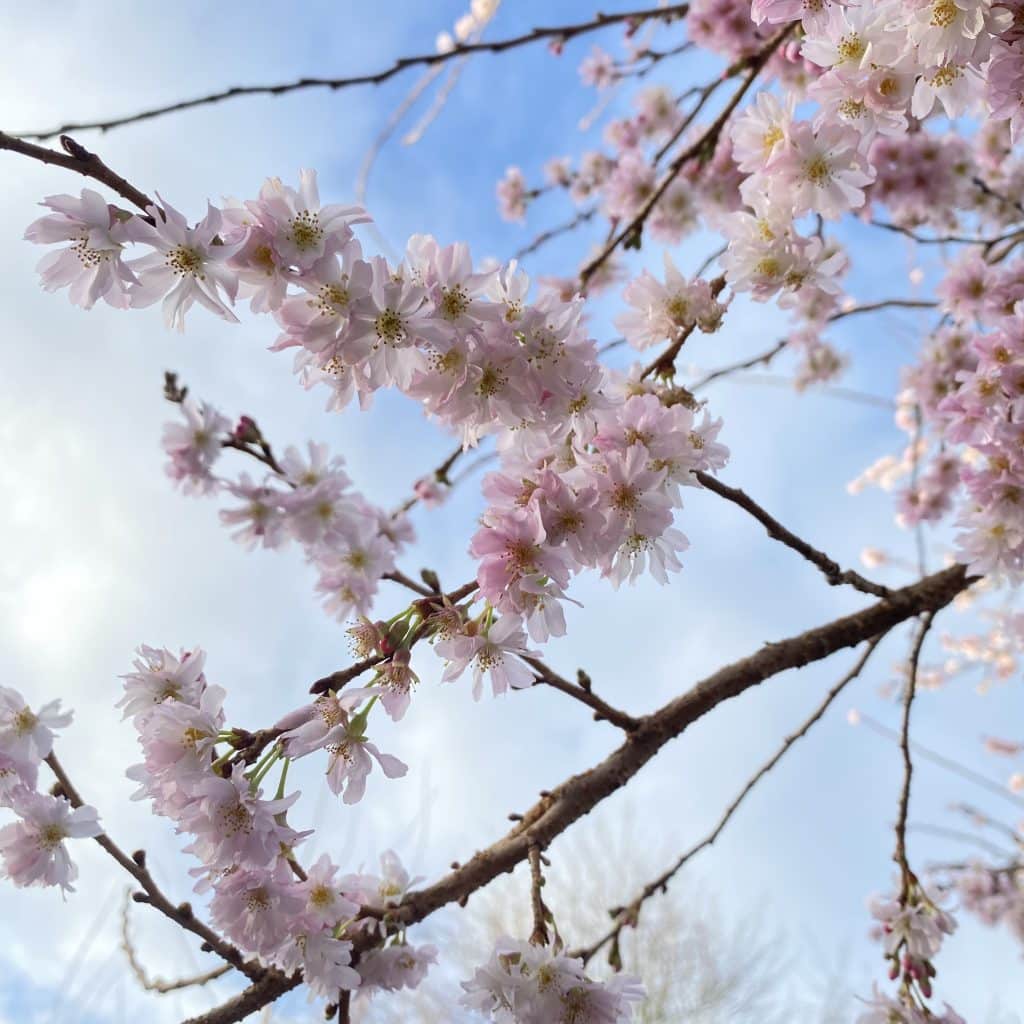
Crab apples are a fantastic choice for year-round interest as well as their support to pollinators and birds. Known for their beautiful spring blossom and eye-catching fruit, two varieties we love are:
‘Red Sentinel’. In spring this Crab apple bursts into clusters of white blossom that attract bees and pollinators. Its glossy red fruits then steal the show later in the year. Compact and tidy, it’s perfect for gardens of all sizes.
‘Street Parade’. The variety produces masses of pink-flushed white flowers in spring, followed by attractive, dark red fruits. With a neat, upright form, it’s ideal for driveways, pavements, and smaller gardens.
Perfect for: Pollinator-friendly gardens and bursts of seasonal interest
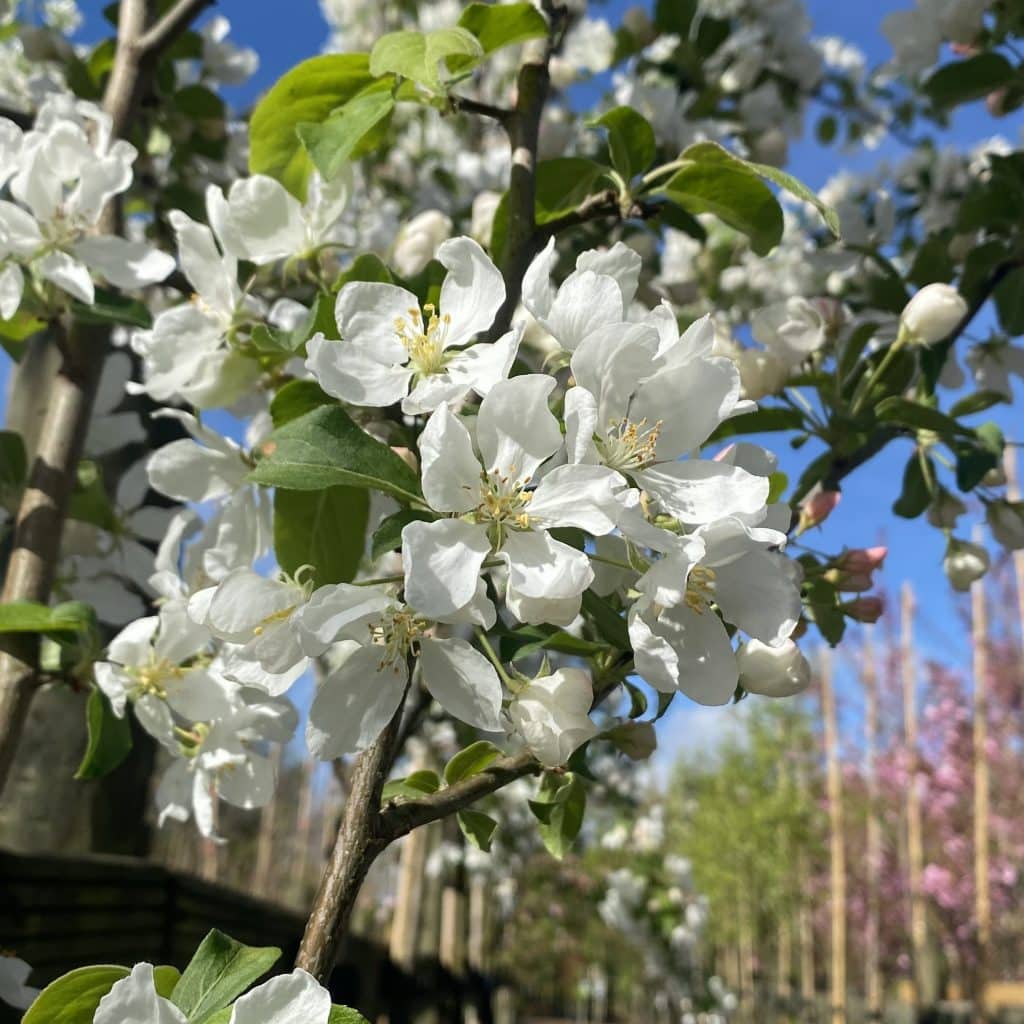
Hawthorns are a classic choice for structure and seasonal interest. They are known for their spring blossom, autumn colour and ability to support birds and pollinators alike. Both tough and beautiful, two standout varieties include:
‘Paul’s Scarlet’. This ornamental hawthorn is a real showstopper, producing dense clusters of double, deep pink to red flowers in late spring. Its rich green foliage turns golden in autumn, often accompanied by small red haws that birds love.
Prunifolia. This variety is cherished for its glossy, dark green leaves that resemble cherry or plum foliage. It flowers in late spring with creamy-white blooms and produces abundant red fruits in autumn, paired with vivid orange and red leaf colour.
Perfect for: Wildlife-friendly gardens and seasonal displays of blossom and berries.

Amelanchiers are graceful, multi-season trees that bring elegance and charm to any garden. Celebrated for their delicate blossom, vibrant autumn colour and wildlife-friendly berries, they’re ideal for adding subtle beauty without overwhelming a space. Two of our top picks are:
‘Robin Hill’. A refined, upright tree that’s perfect for urban or smaller gardens. In early spring, it bursts into soft pink buds that open to pale blush-white flowers, attracting pollinators. As the year progresses, it develops small, purple-black fruits loved by birds, followed by striking orange-red autumn foliage.
Lamarkii. Known for its year-round interest, this variety is one of the first trees to bloom in spring, with star-shaped white flowers that light up the garden. These are followed by berries and a fiery display of foliage in autumn. Naturally compact and bushy, it works well as a small tree or large shrub.
Perfect for: Small gardens, mixed borders and seasonal interest all year round.
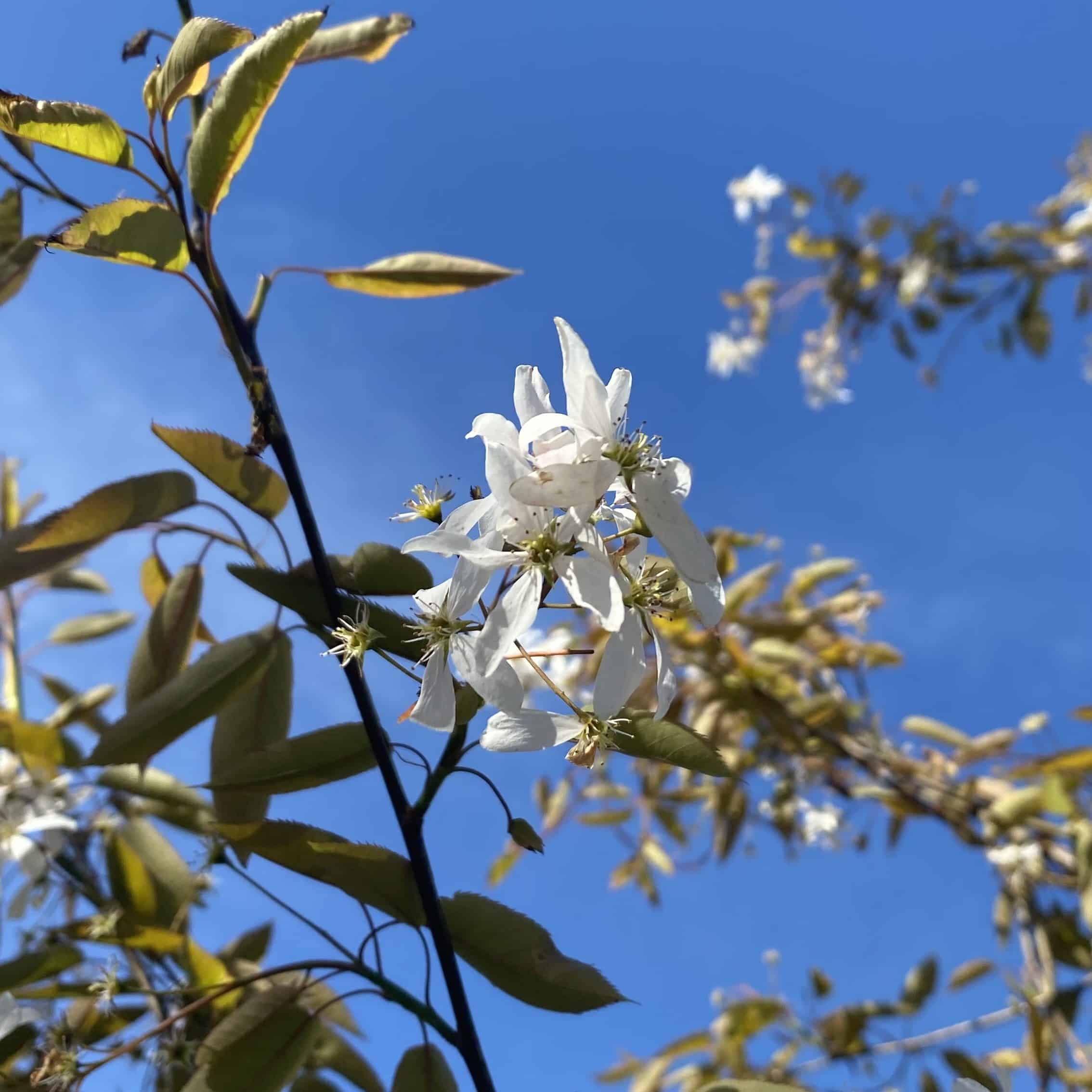
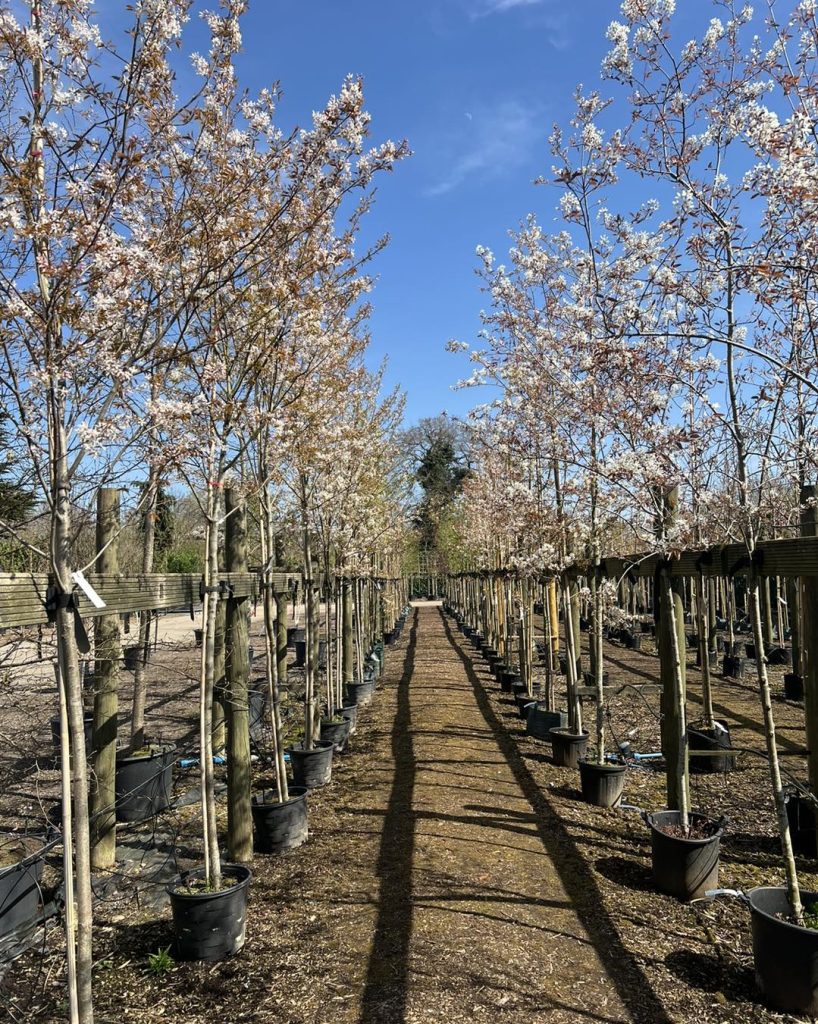
Ornamental pears are an excellent choice for structure and year-round appeal. ‘Chanticleer’ is an upright tree with a tidy, conical shape that makes it ideal for avenues, driveways, or tight spaces. It produces a profusion of white blossom in early spring that is great for pollinators. Its glossy green leaves stay fresh-looking throughout summer, turning rich shades of red and purple in autumn. It is a versatile favourite for both urban and garden planting!

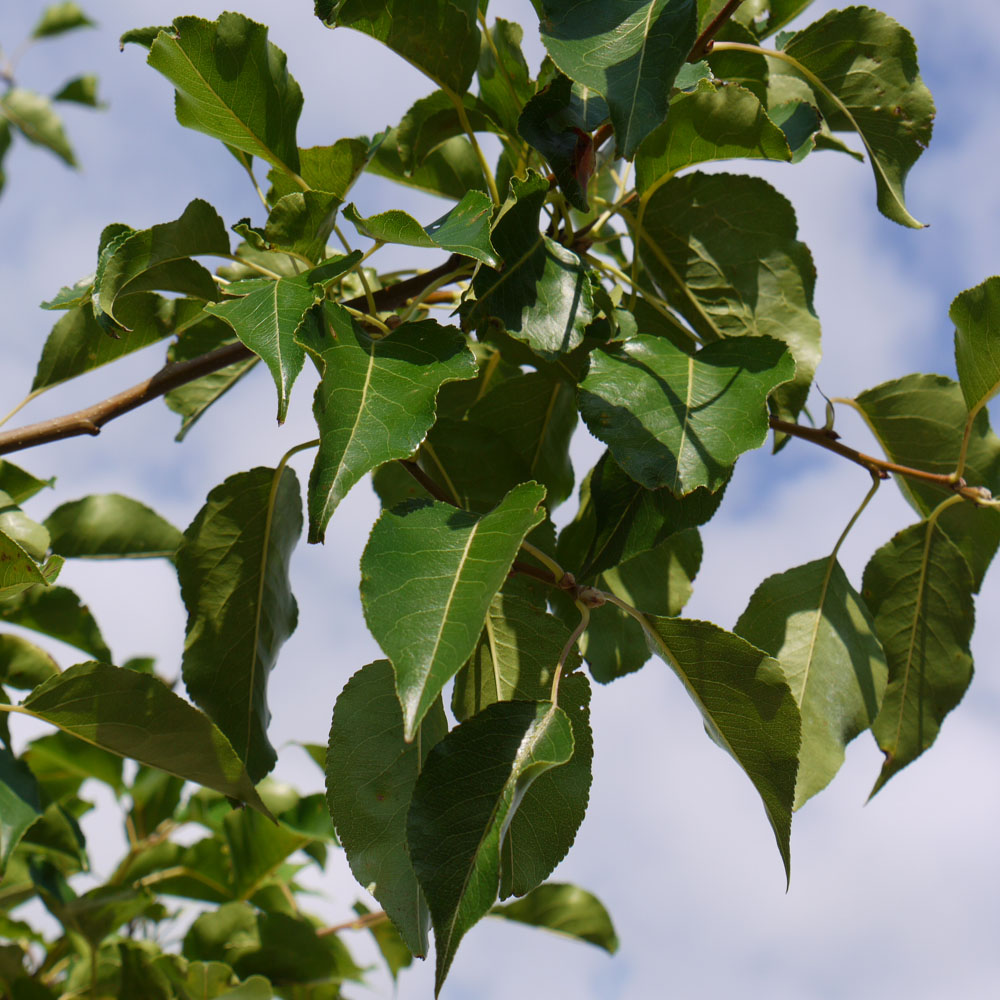
1. How to plant bare root hedge plants
2. King and Co are Plant Healthy
3. Photinia ‘Red Robin’ Planting Guide Information
4. Essential support for your newly planted tree
The bare root season start typically runs from November to March, coinciding with the dormant season. You can prepare for the bare root season by pre-ordering your plants. We start accepting pre-orders for bare root hedging plants in September or October. To pre-order, simply email our sales team with your requirements. We’ll provide a quote based on the quantity you need and add you to our contact board to keep you informed when the plants are ready.
Bare Root plants are grown in a field and then lifted without soil around their roots during the dormancy period. They are then graded ready for transport and planting. For planting to be successful, the soil must be cool enough to ensure the plants are not actively growing. This is why this season falls firmly within the colder months of the year.
Some of the benefits of planting bare root include:
Quantities. If you’re planting 40-60 cm or 60-90 cm tall plants in a clear run, aim for five plants per metre in a double staggered row. This spacing helps create a dense native hedge quickly and effectively. A small failure rate of around 5% is normal. So, when planning, always order a few extra plants to account for possible losses.
Accessories. To give your new hedge the best start, we recommend using canes and guards. These accessories offer crucial protection against common predators like voles, rabbits, and deer. Beyond protection, they also provide essential support for young plants, encouraging upright growth. This support plays a significant role in boosting their survival and successful establishment.
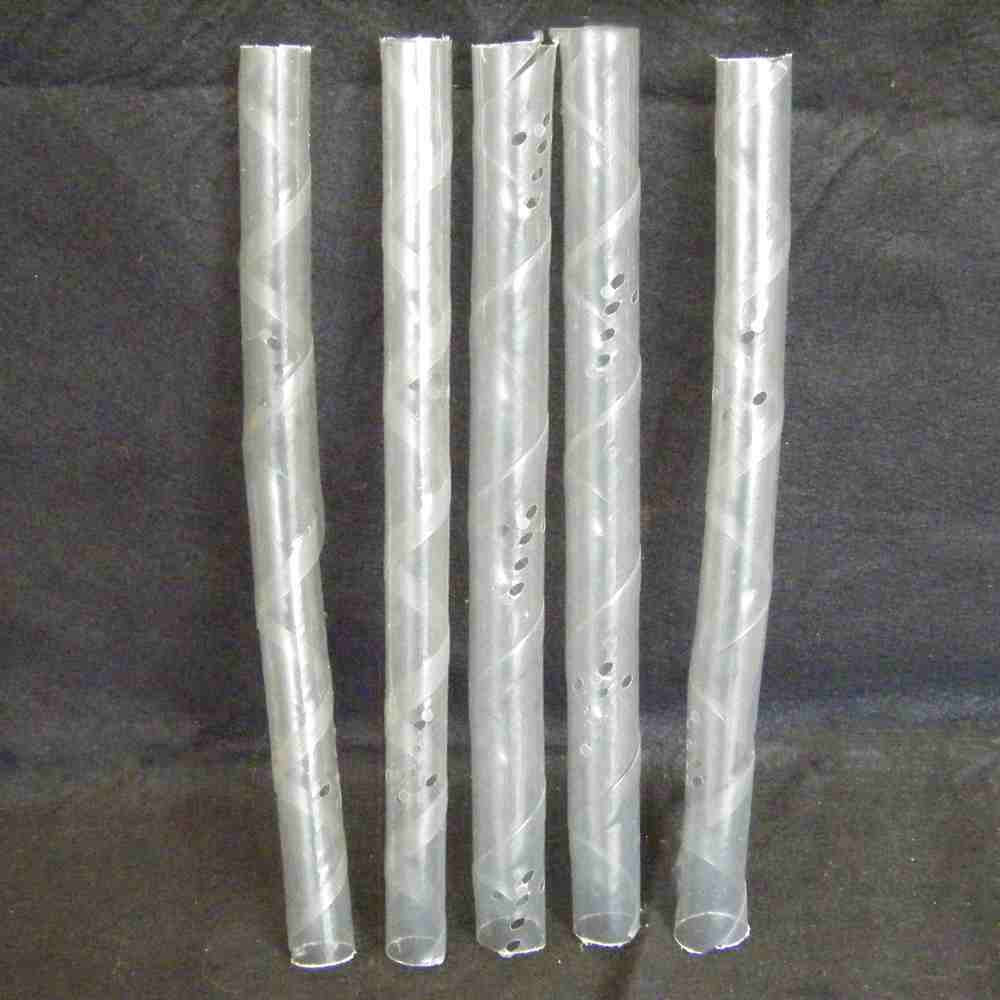
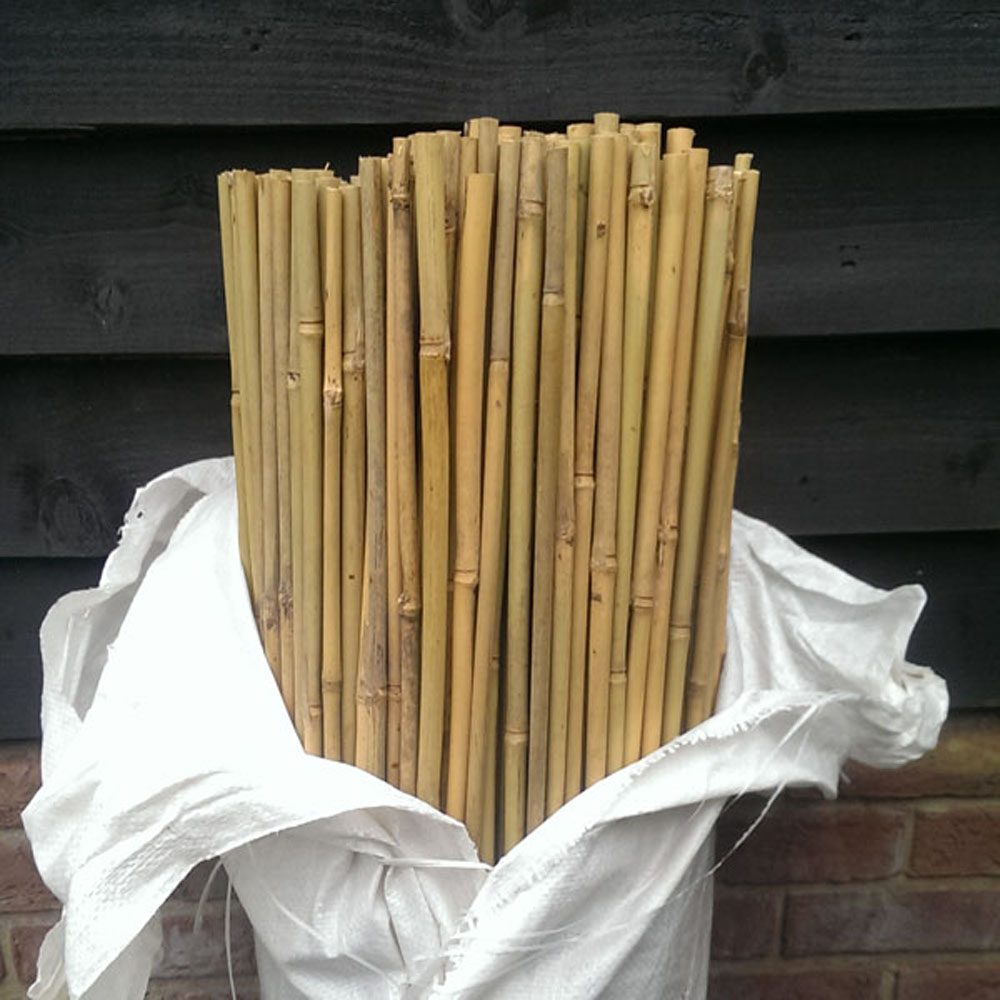
Planting. Bare root plants are much easier to install as it isn’t as difficult to manoeuvre them around. We also recommend that you plant using the ‘notch planting’ technique as it is a quick process that avoids digging huge planting pits that require laborious backfilling. When ‘notch planting’ you should…
1. ‘Heel in’ tight to ensure good soil/root contact, you should have to tug the plant quite hard to remove it.
2. Make sure that the roots are moist.
3. Open up a slit in the soil, push a spade few inches deep and move back and forward.
4. Slide the root of your bareroot plant into the slit, up to the nursery soil mark.
Don’t remove the hedging plants from the box or bag before you plant. Exposure to sun or drying winds may lead to root desiccation and eventual failure.
Aftercare. It is important that you continue to care for the plants after installation. Adding a layer of mulch, such as wood chips, around your trees is a great way to reduce weed competition and help the soil retain moisture. For continued healthy and vigorous growth, we recommend topping up the mulch annually in the spring. By maintaining this practice in the early years following planting, you could see as much as one-third extra growth per year!
A Guide to Screening Trees: Is Photinia Good for Natural Privacy?
Bare Root Planting Tips: How to establish a native hedge on a tight budget
A Guide to Pleached Trees: How effective are Hornbeam at creating privacy?
A Guide to Leylandii: Is it good for screening?
Winter gardens often feel dull and lifeless. But with the right planting choices, they can become vibrant, even in the coldest months. Knowing how to brighten winter landscapes starts with selecting trees that offer structure, colour and texture when everything else fades. Let’s explore our favourite varieties, why they work and how to use them effectively!
Himalayan birch is one of our favourite candidates for winter gardens. It has a bright white bark that shines through the colder months, glowing against darker backdrops. This striking contrast brings light and interest to even the gloomiest winter days. Its crown is airy and open too, so it won’t cast heavy shade. That makes it perfect for gardens of any size, adding height and elegance without overwhelming the space.
Green and purple beech both offer year-round interest and strong structure. Though deciduous, they hold onto their dry, coppery leaves through winter (unless we have a harsh winter). This foliage adds movement, creates shelter and warms up bare spaces. Green beech reflects more light, helping to brighten shaded corners. Purple beech adds depth and makes pale features, like snow, white bark, or evergreens, stand out.


Known for its blue-green, twisted needles, Scots pine provides a splash of colour that creates a striking contrast against grey winter landscapes. It also produces brown cones after pollination, adding extra detail and seasonal charm.

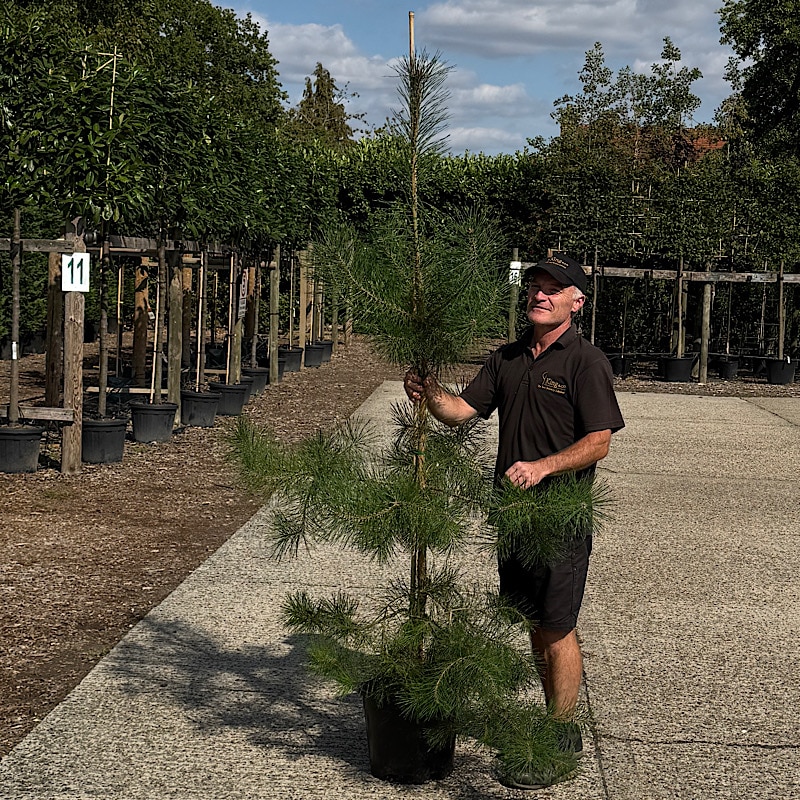
Winged spindle has dark green, oval leaves turn a brilliant red, creating a spectacular display. A great choice for seasonal interest, this plant also shines in winter. Once the leaves fall, the stems reveal thin, raised ridges known as “wings.” These corky edges add striking texture and structure to the bare winter landscape, and give the plant its common name. Thanks to this unique feature, Winged spindle remains visually interesting even in the coldest months.
Pyracantha is an excellent evergreen plant known for its sharp thorns and vibrant autumn berries. It’s a great choice for attracting wildlife and can also serve as an effective defensive barrier. These plants can also create an attractive feature when trained to a wireframe and attached to a fence or wall.
Portuguese laurel (Prunus lusitanica) is one of our top picks for screening and hedging. Its dense, glossy foliage creates instant privacy and structure. Even better, it holds its leaves all year, keeping gardens green through every season. In this guide to Portuguese laurel we’ll show you why it’s a must-have for any garden.
Portuguese laurel has dark green, slightly glossy leaves that grow from young stems with a purple tint. In spring, it produces clusters of fragrant white flowers that contrast beautifully with the foliage. By autumn, small purple fruits appear, adding seasonal interest. This plant grows with a naturally dense habit and can reach 6–8 metres when mature. Although it grows more slowly than Cherry laurel, it holds its form well with minimal pruning. Yearly clipping will help to maintain a clean, solid shape. At King & Co, we offer Portuguese laurel in tree, hedging, and ball forms…
Our current stock of Portuguese laurel features a clear stem of around 1.6m, with a dense head of foliage measuring 90–110cm. This sits neatly above a standard 6ft fence, creating a stilted hedge that adds height and privacy without taking up much ground space.
These trees are perfect for screening unwanted views, such as neighbouring windows, satellite dishes, or extensions. For a continuous screen, we recommend planting them 1.2–1.5m apart. However, you can also use a single tree in a key spot to block a specific view.
We also stock hedging plants that are branched from ground level. These hedging plants are ideal for marking garden borders, softening fence lines or screening low-level views like roads and footpaths. They clip easily into a neat, formal hedge but also look great when left slightly looser for a more natural feel.
Available sizes (left to right): 80–100cm, 1.2–1.4m and 2–2.25m tall
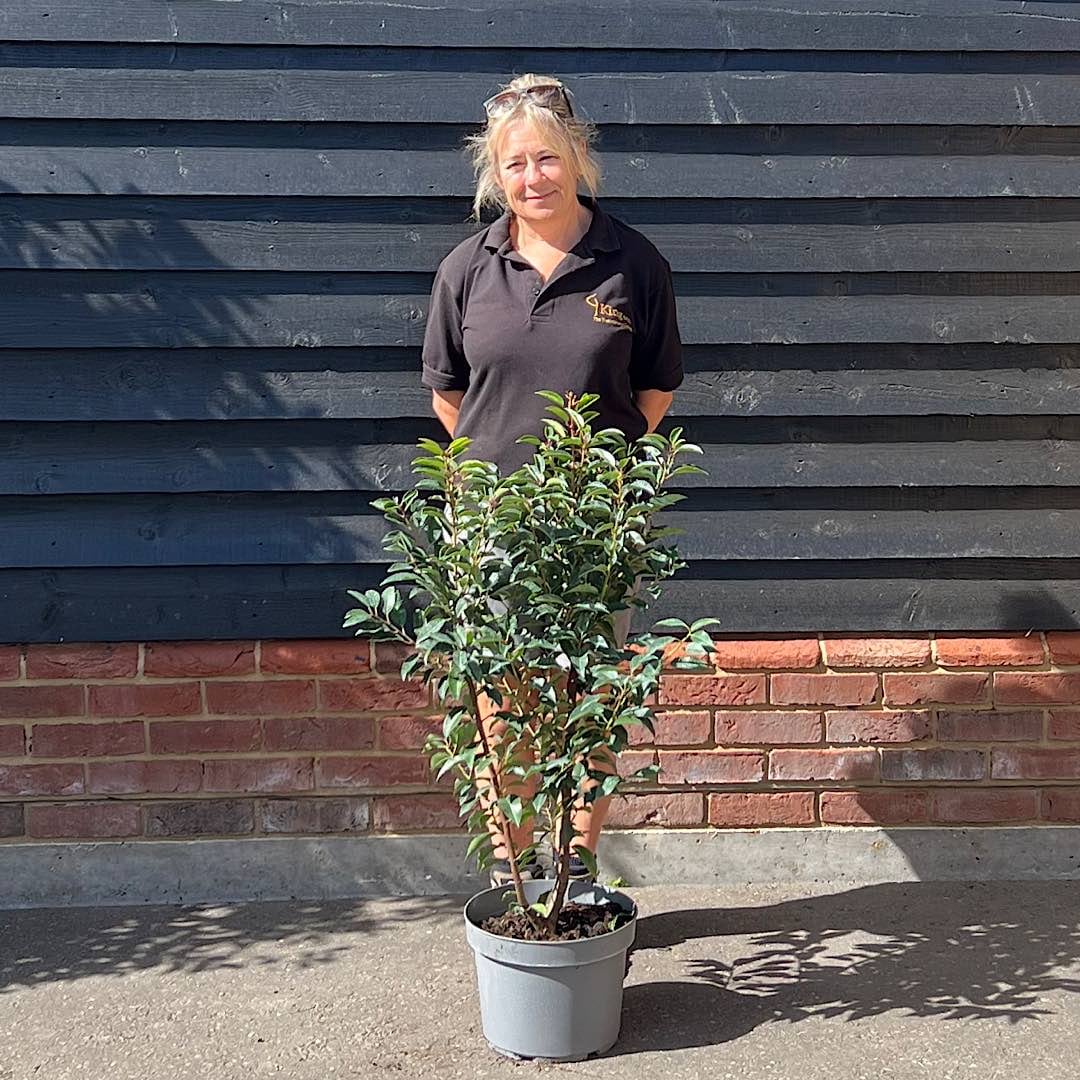
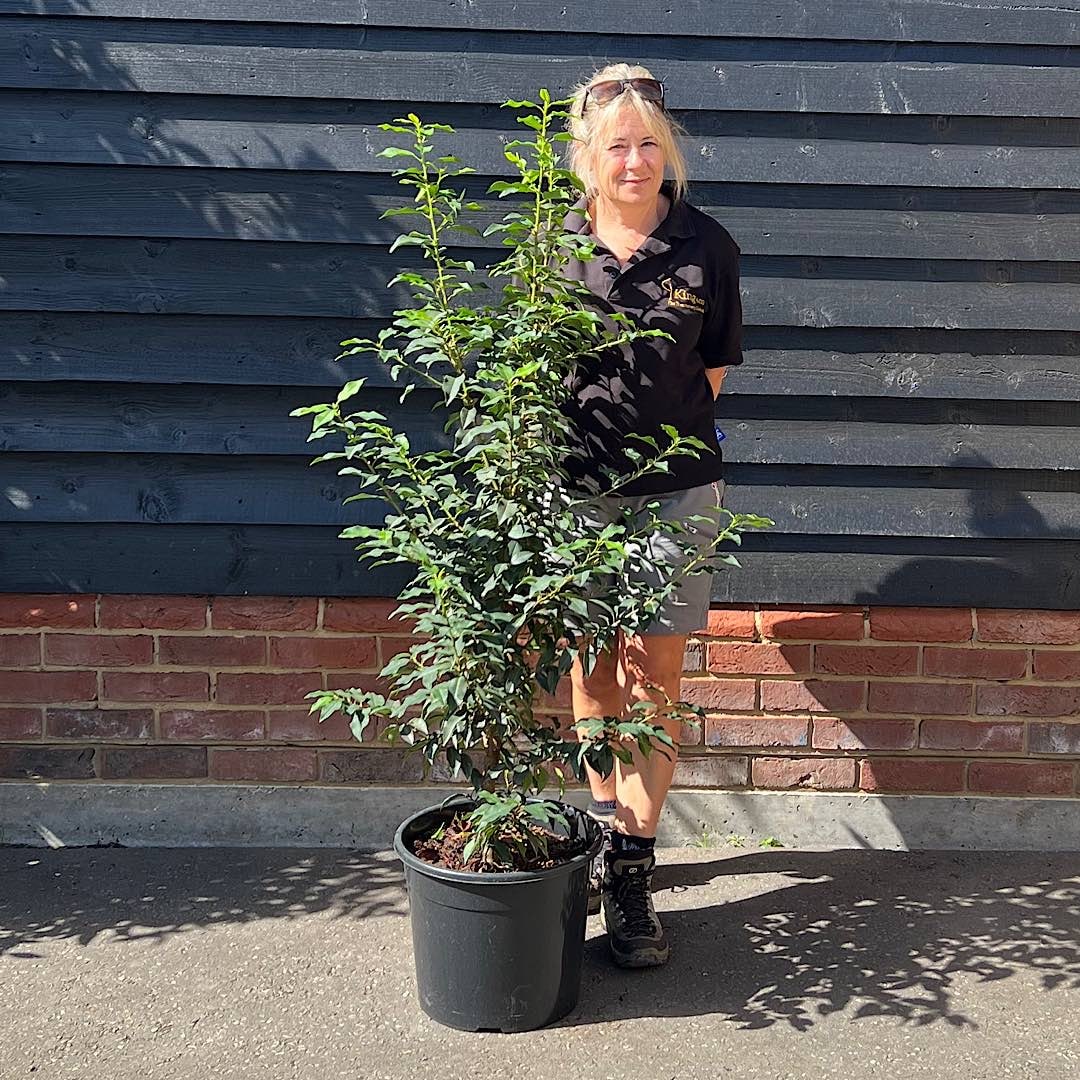
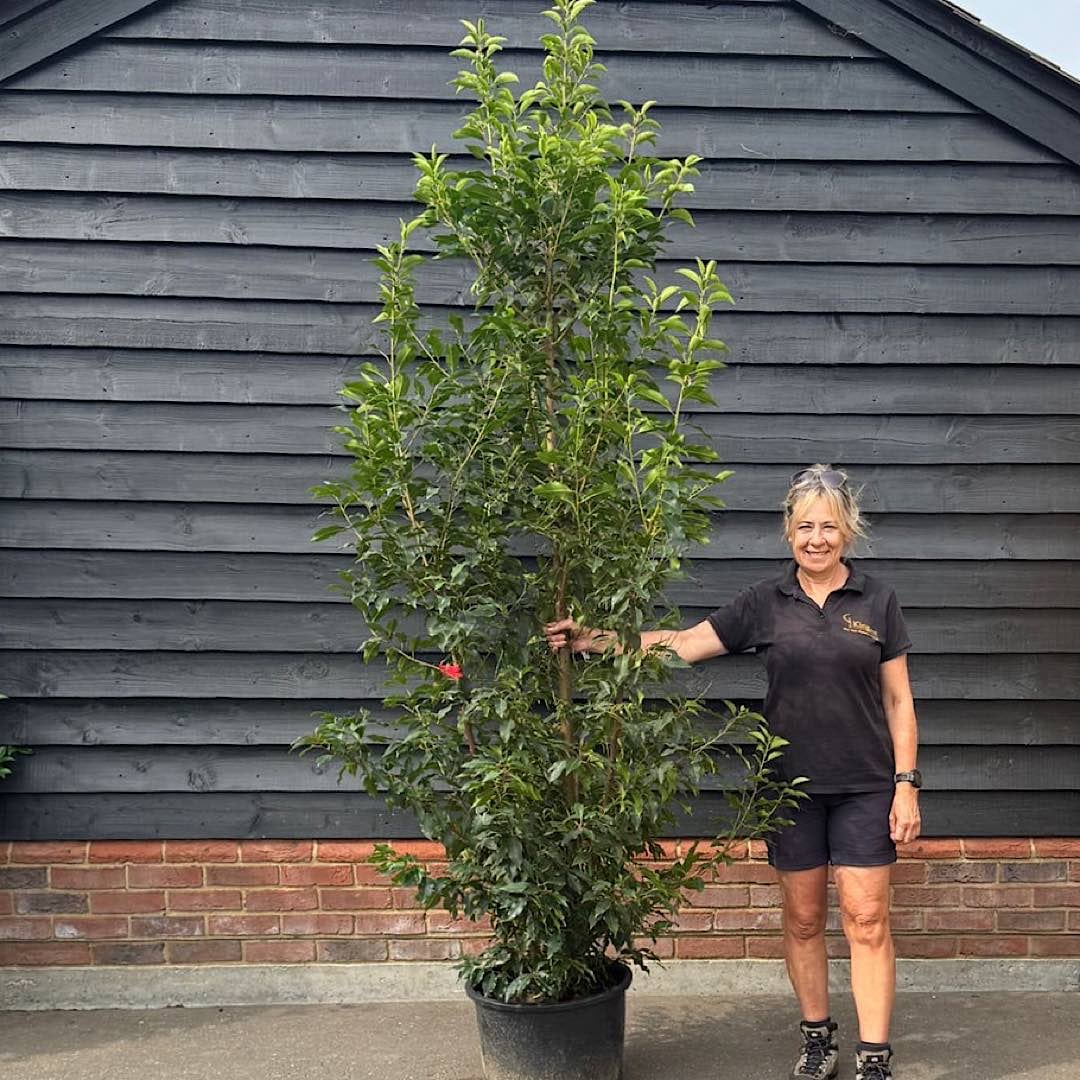
Clipped balls are perfect for adding year-round structure, form and interest to any garden. They work well in formal designs, on either side of a doorway or path, or as standalone features in beds and borders. They’re also great for softening hard landscaping, adding rhythm to planting schemes, or creating focal points in modern or traditional settings.
Portuguese laurel is great for this as it holds a neat, rounded shape with minimal maintenance. It also tolerates regular clipping, so it’s easy to keep them looking crisp and defined throughout the year!
Choosing shrubs known for their ornamental value is a smart and stylish way to bring structure, colour and interest to outdoor spaces. At King & Co, we stock a selection of shrubs, from neat, low-maintenance evergreens to seasonal showstoppers with vibrant foliage or flowers. These versatile plants can be used to frame paths, soften hard edges or add height and texture without overwhelming the space. By choosing the right varieties, you can enjoy year-round appeal in even the most limited garden settings. Here, we’ve highlighted our favourite ornamental shrubs for small gardens!
Dogwoods are known for their vibrant winter stems and striking seasonal foliage. One standout variety is Cornus alba ‘Elegantissima’. This eye-catching shrub features green leaves with creamy-white edges in summer and bright red stems in winter. It’s a great choice for adding strong contrast to bare garden spaces during colder months.
Photinia is known for its glossy evergreen foliage and colourful new growth. It’s an excellent choice for hedging or as a standout specimen in a mixed border. One of our favourite varieties for small gardens is Photinia ‘Carré Rouge’. This compact, ornamental shrub features deep green leaves and vibrant red new shoots. Its red foliage is richer and longer-lasting than that of many other Photinia varieties. It also grows slower and stays smaller than other Photinia varieties, making it ideal for small gardens, containers or low hedges. It’s a great choice for adding bold colour and evergreen structure without overwhelming the space.
Cotinus, or smoke bush, is a deciduous shrub with bold foliage and strong form. It gets its name from the hazy, smoke-like flower plumes that appear in summer. These soft, clouded blooms add a unique texture to the garden.
One standout variety is ‘Golden Lady’. It has rounded leaves that open warm orange, turn golden yellow in summer and glow rich orange again in autumn. By mid-summer, pink, feathery plumes rise above the foliage, adding a soft, smoky effect. It’s a great choice for bringing colour, structure and contrast to borders, mixed plantings or as a striking standalone feature.
Nandina, commonly known as heavenly bamboo, is a tough, evergreen shrub loved for its colourful, ever-changing foliage and low maintenance nature.
‘Gulf Stream’ in particular, is a compact variety that brings vibrant colour and a neat, structured form. In spring, fresh growth emerges in shades of bronze and orange. By summer, the foliage deepens to green, then transforms into rich reds and golds in autumn (lasting well into winter). In summer, it also produces delicate white flowers, sometimes followed by clusters of bright red berries. With its dense, rounded shape and fine-textured leaves, it’s perfect for borders, containers or low hedging. Its small size and tidy habit make it ideal for compact spaces, adding year-round interest without taking over the garden.
Viburnum tinus is a reliable, evergreen shrub known for its year-round structure and winter blooms. It’s easy to grow, low-maintenance, and ideal for bringing colour to the garden during the colder months.
‘Eve Price’ is a popular compact variety, perfect for smaller spaces. It features glossy, dark green leaves and a dense, rounded habit. From late winter into early spring, it produces clusters of pale pink buds that open into white flowers, brightening up the garden when little else is in bloom. These are often followed by small dark berries, which attract birds and other wildlife.
Topiary is perfect for adding structure and definition to your garden, especially in formal settings, modern landscapes or compact spaces. Some of our most popular topiary forms include clipped balls, elegant cones, spirals and half or quarter standard trees. Whether you’re framing an entrance, adding height or creating a focal point, topiary offers endless design potential. In this article, we’ll explore how these classic shapes can transform your outdoor space.
Ligustrum delavayanum is a compact evergreen shrub with dark green, ovate leaves. It has small clusters of tiny white flowers in the spring, and ovoid blue-black fruits in the autumn.
Our pom-poms have been impeccably clipped to feature three or four balls of foliage. They are ideal for adding both height and visual appeal to smaller or formal gardens. They also create a particularly striking display when placed near doorways or along driveways.
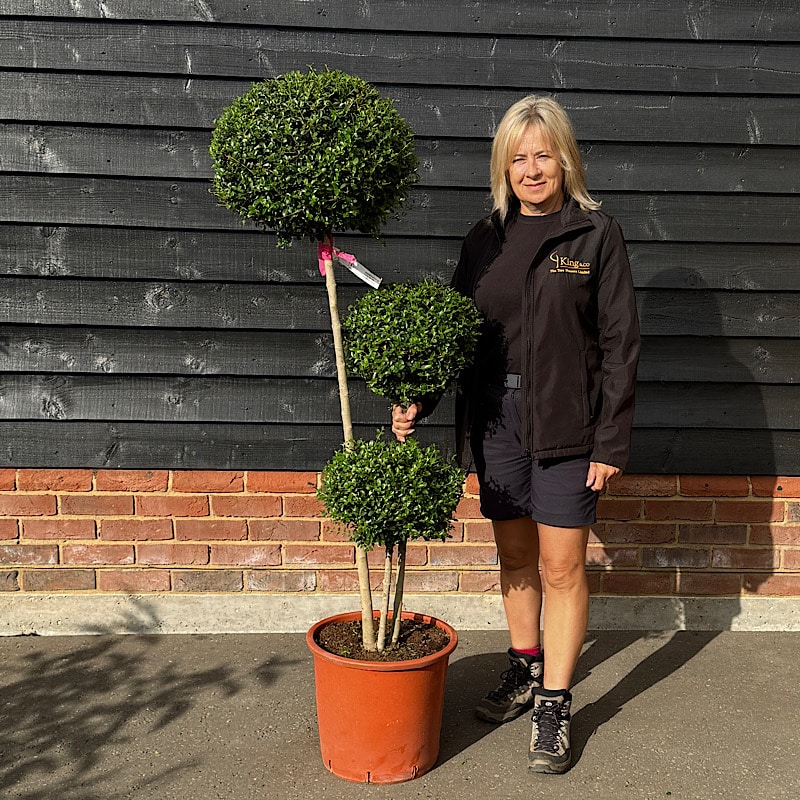

We also stock Cupressocyparis leylandii ‘Castlewellan Gold’ pom-poms. These plants have flat sprays of light green, scalelike, foliage that has been trimmed to create an eye catching architectural feature.
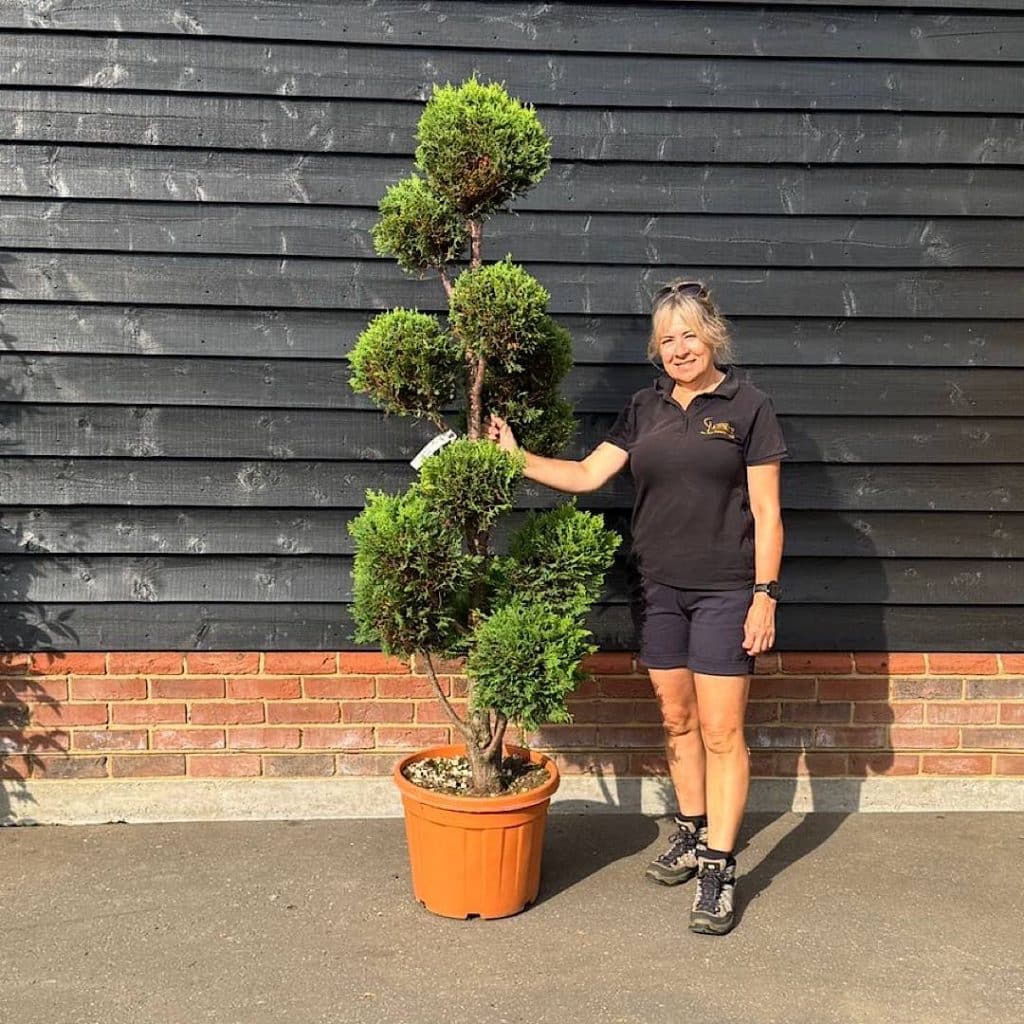
Clipped balls are a great way to add structure and definition to your garden. Especially if they’re evergreen as this effect will last all year-round. Varieties like Prunus lusitanica, Ilex crenata or Photinia ‘Carre Rouge’ are great for this because they offer the ideal combination of evergreen foliage, dense growth and resilience, making them standout choices for neatly clipped, long-lasting topiary.
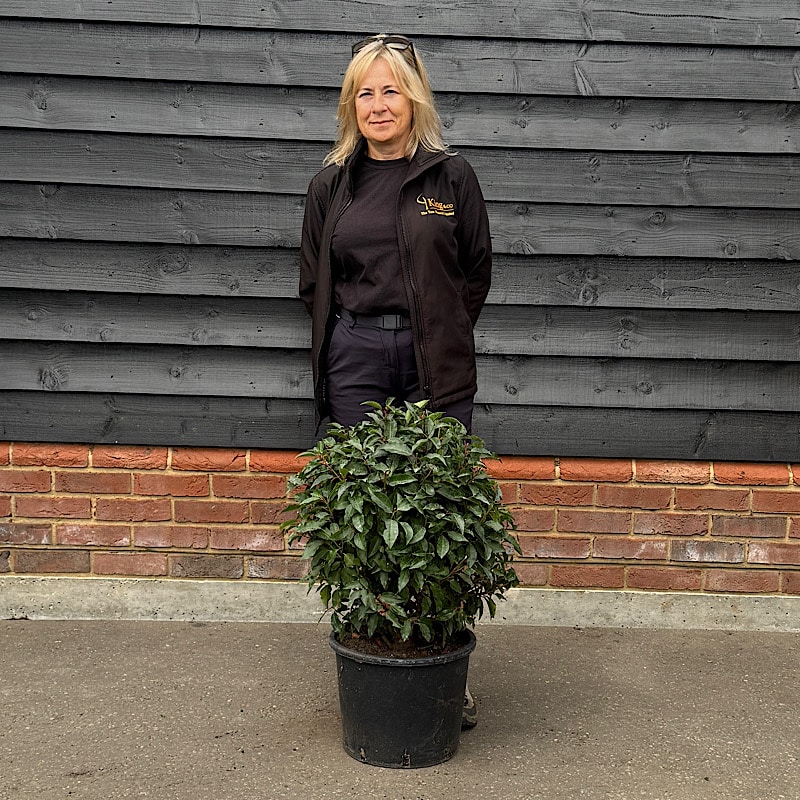
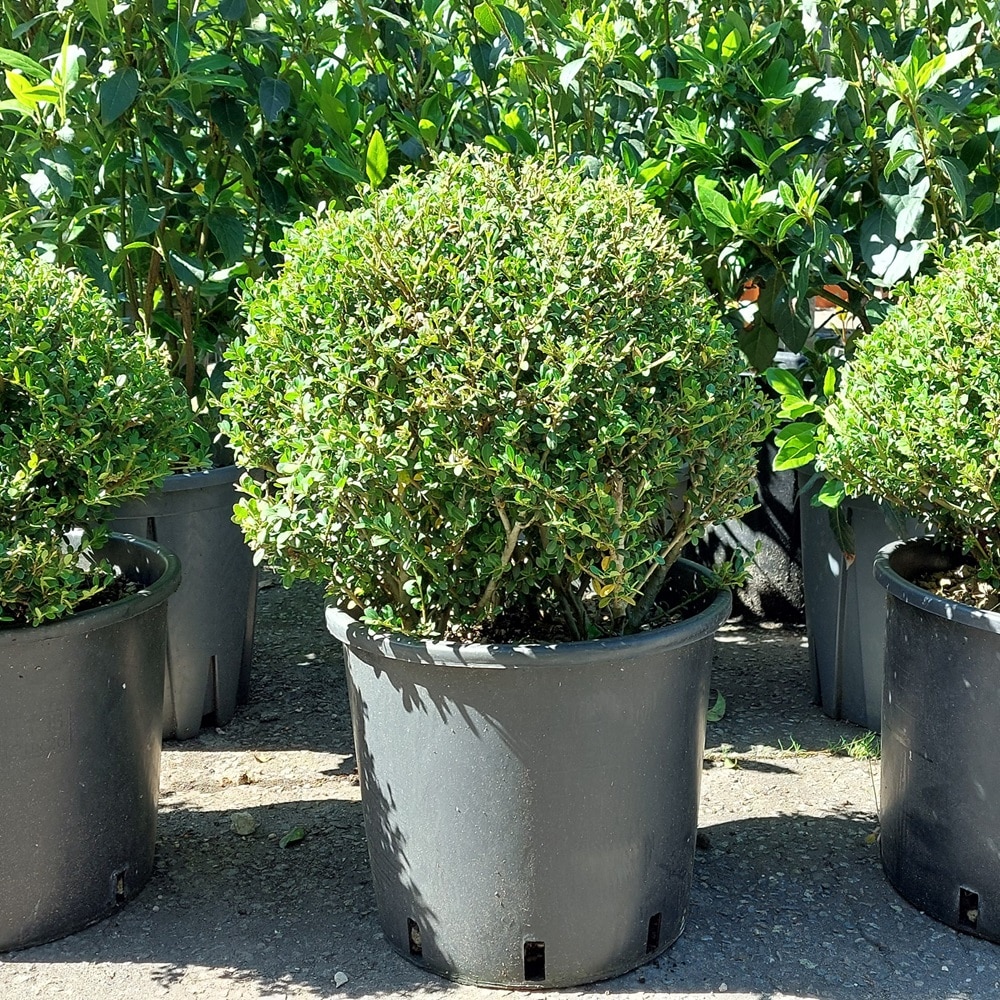
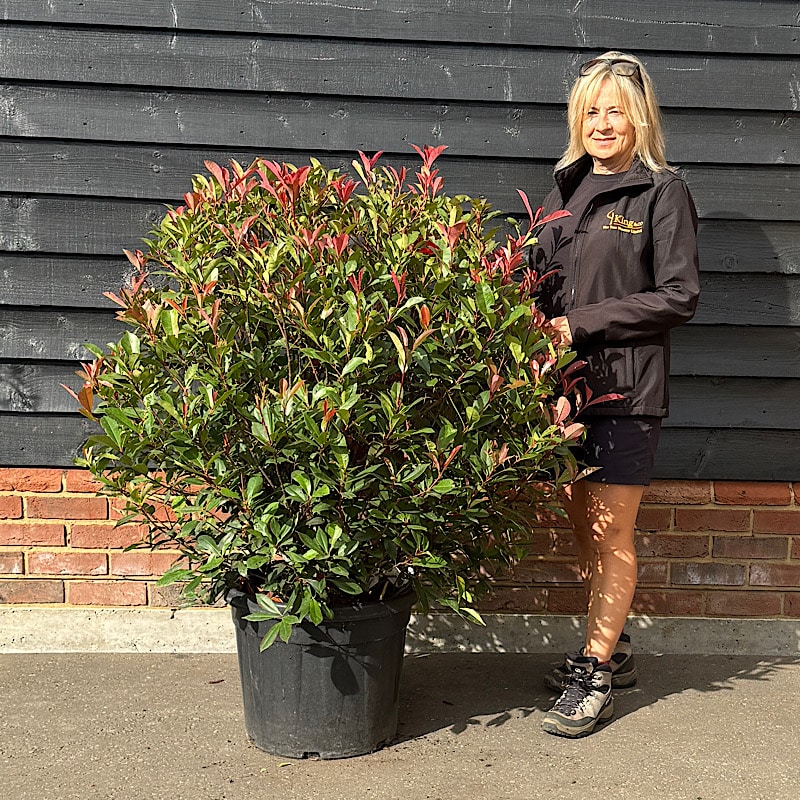
Similar to topiary balls, clipped cones are good for adding structure, height and year-round interest to your garden. Their strong, upright shape makes them ideal for framing entrances, lining pathways, or creating striking focal points. Easy to maintain and evergreen, they offer a bold, architectural look with minimal effort.
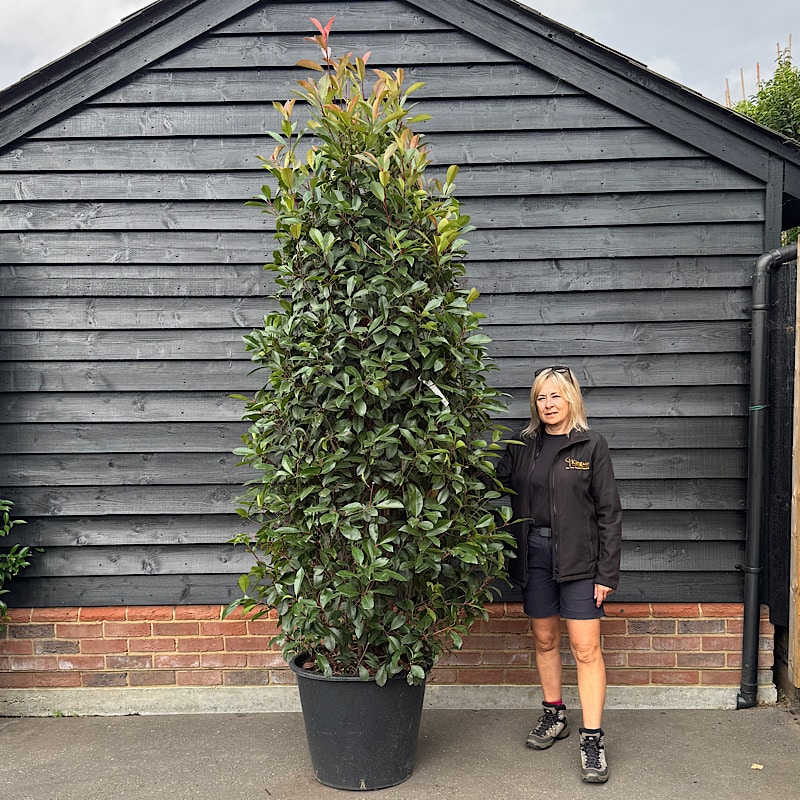

Half and quarter standard trees are perfect for adding height and interest without overwhelming a space. With a clear stem and a neatly clipped head, they create a formal, lollipop-like shape that works well in pots, borders or as a repeating feature. Like topiary pom-poms, balls and cones, they offer year-round structure and are easy to maintain with occasional trimming.
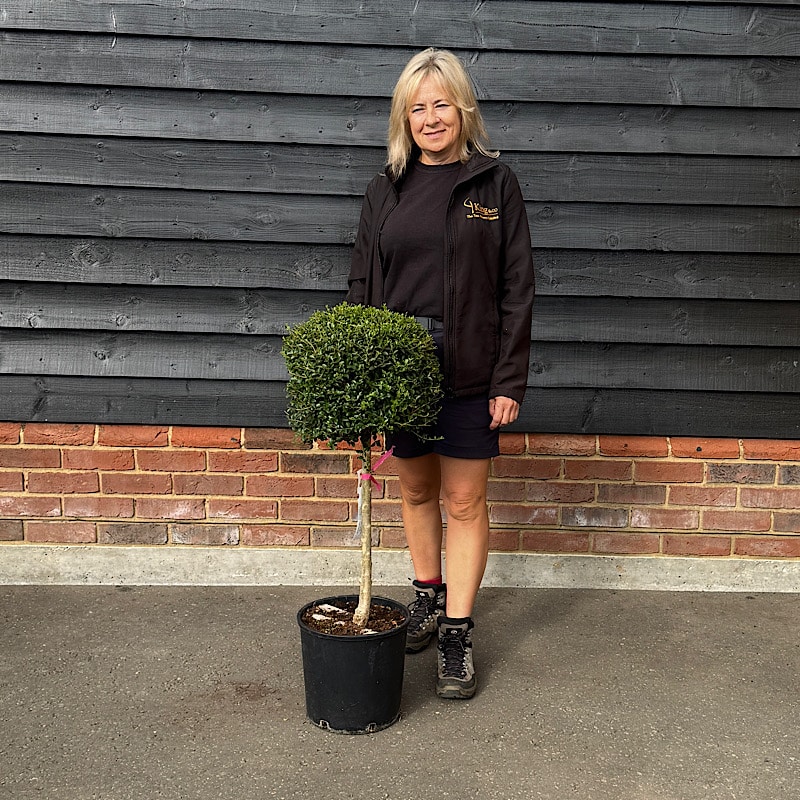
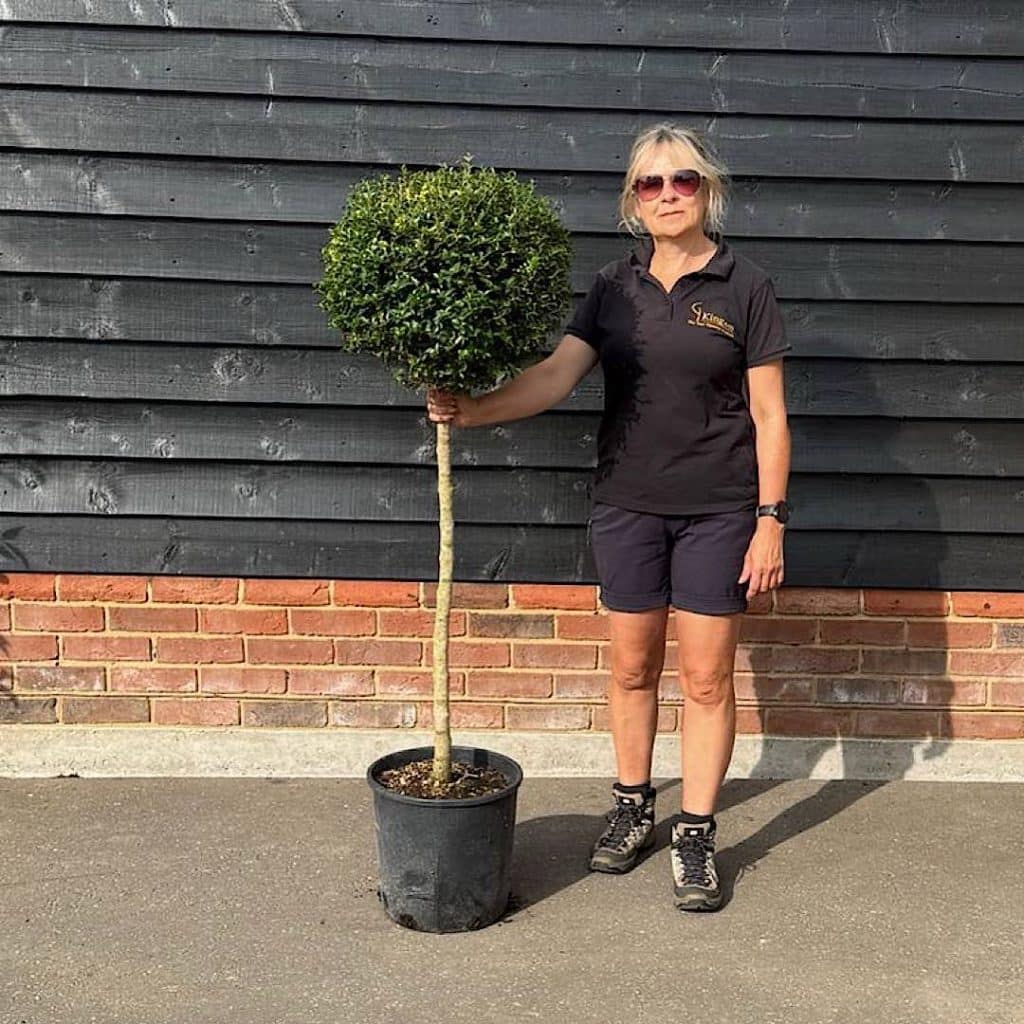
You can buy trees, hedging, shrubs and topiary online by browsing our website.
If you do not see a plant or size that is suitable for you then please call as we stock a wide variety of plants in our tree nursery. It’s worth noting that many other websites sell other people’s stock (i.e. they act as an agent) so you cannot view the products at their own site. At King & Co, all of our advertised plants are available for viewing at our tree nursery in Rayne, near Braintree, situated just over an hours drive out of London.
Our knowledgeable and experienced tree nursery staff are always contactable via phone on 01376 340469 or if you have any questions regarding any of our trees or accessories.
If you cannot see what you require on our website, please complete the enquiry form. We will give it our urgent attention and will get back to you shortly with a solution that meets your needs.
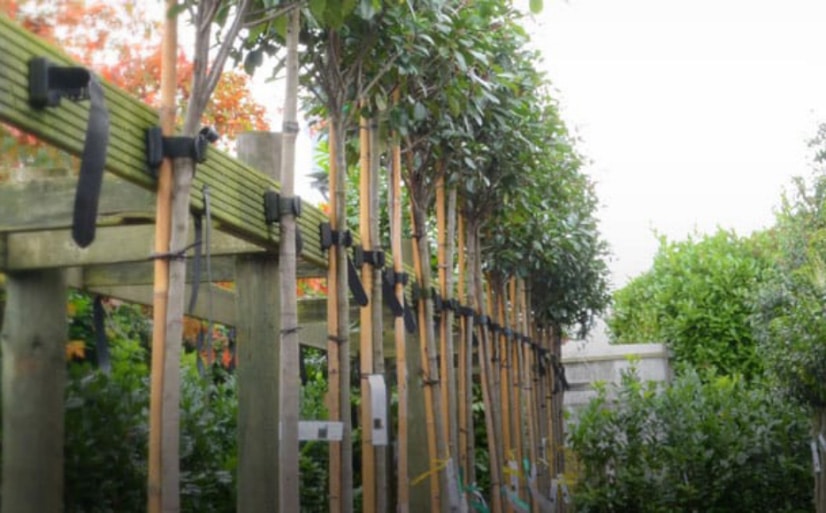
If you are looking for specific evergreen trees, Photinia, Leylandii hedging, Leylandii trees, instant hedging or shrubs, use the search bar at the top of the page